
A man on a mission


A man on a mission
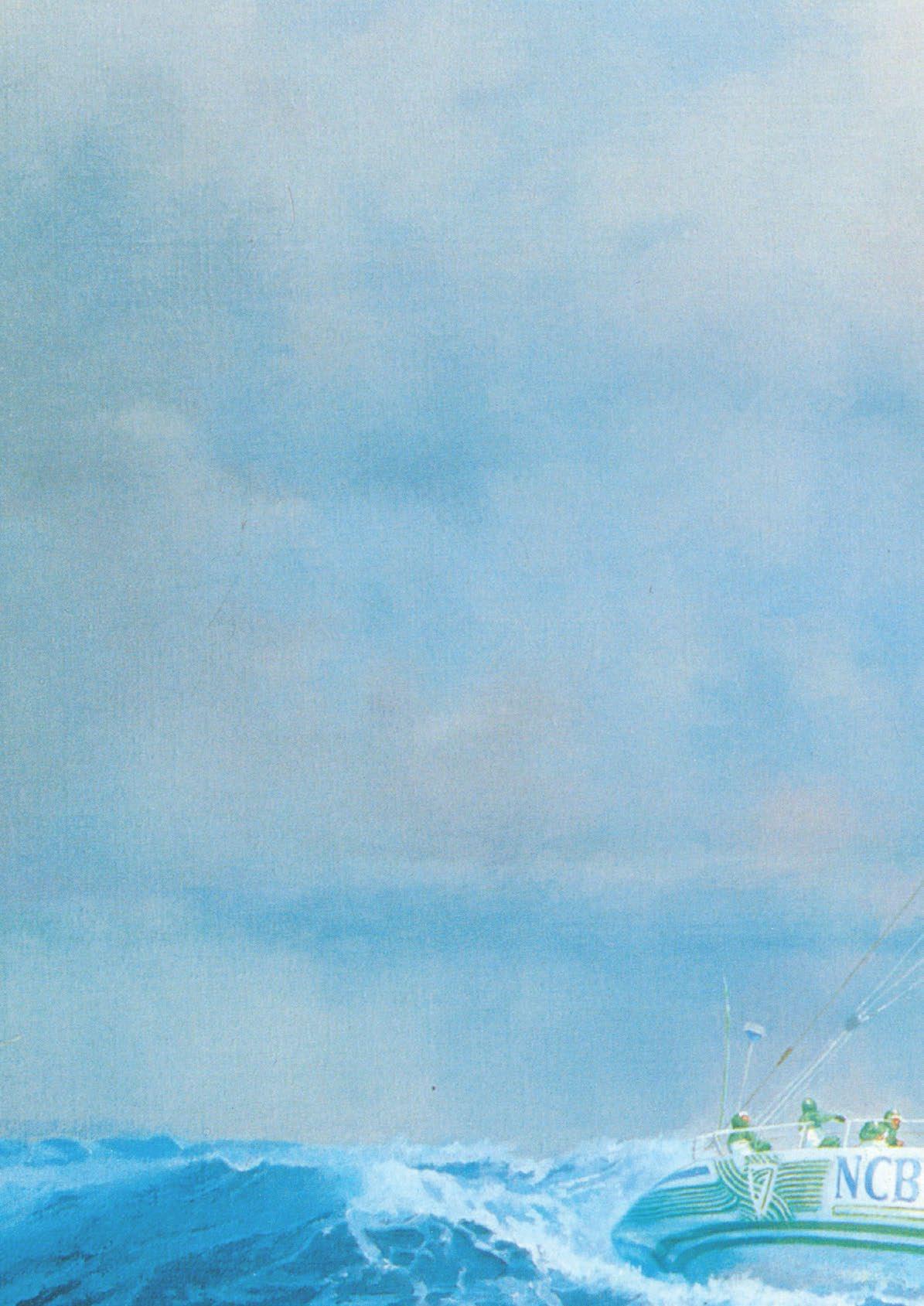
This memoir was written between May 2023 and May 2024, driven by a series of interviews with Alzheimer’s sufferer, Phil Barrett, his wife Mary and his children Katie and Michael, conducted by Robert Walker for Pressroom Philanthropy and the Umbrella Dementia Café’s.
This is to the best of Phil’s recollection, given the effects of Alzheimer’s Disease so we apologise for any discrepancies regarding dates, times or places that may appear.
Much of the information and many of the quotes have also been gleaned from Phil’s logs, notes and diaries.
and printing.
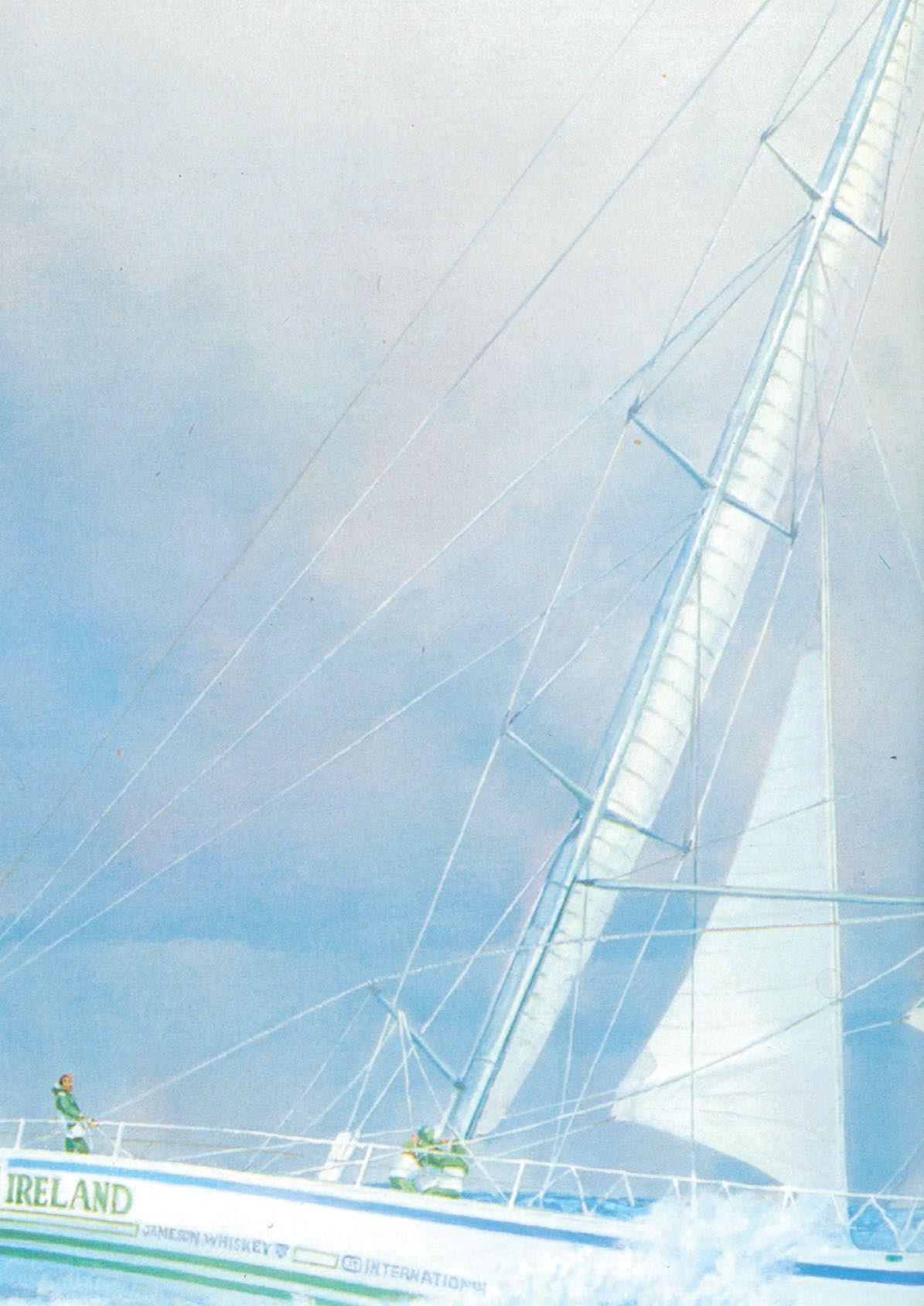
By Robert Walker with the barrett family
Within the narrative we have created here, the essence of a man’s life comes aliveits triumphs, struggles, joys, and sorrows. This memoir is a personal voyage through these times.
Within the pages that follow, we embark on a journey — traversing this terrain of memories and emotions. This memoir is not a mere collection of events or a recitation of facts; it is a tribute to a life well-lived and experienced.
It is a narrative that encompasses the complexity of the human condition, with all its fragility, resilience, and unyielding spirit.
Phil Barrett and family guide the reader through the pivotal moments that have shaped him - the memories of loved ones, friends and colleagues, the encounters that altered his path, and the pursuit of adventure that has driven everything he has ever done. This is a memoir of introspection, a candid reflection of the choices made, the roads taken, and the lessons learned along the way.
In sharing his story, Phil Barrett hopes to inspire and touch hearts, by providing an honest reflection of his life.
Through laughter and tears, victories and defeats, love and loss, we will discover the power of the human spirit and the resilience that lies within us all.
This is Phil Barrett’s memoir; a testament to the complexity of life and to the power of storytelling. May the echoes of Phil’s journey resonate within your own heart, inviting you to embark on your own voyage of self-discovery and adventure.


Many of our key life experiences revolve around our families. These include the ones we were raised in, and the ones we may have now. Some of us have been separated from our families along the way and some of us have been lucky enough to create new ones.
If you told Phil Barrett that he could not or should not do something, he probably just did it to prove that he could.
From humble beginnings on Worthing Avenue in Gosport, to traveller extraordinaire, lover of music and the contemporary artists of his time, real-life adventurer, champion yachtsman, family man and successful businessman and manufacturer, Phil has lived well and large.
Phil’s was born in 1952 and raised in England’s southwest. His home base was Gosport in Portsmouth, a major naval town in West Sussex. His parents, Brian and Elizabeth (Betty) Barrett had a young family that was sadly separated when Brian passed away, killed in a car accident in Singapore whilst serving in the British Navy. Phil and his brother David were only 5 and 3 years old respectively.
Phil was subsequently brought up by his mother and maternal grandparents, Harry and Harriet Waller. He recalls his grandfather as a kind man who was regimented in the way he lived his life.
Phil recalls.
“He had to put on a collar and tie before he came to the breakfast table! But he was a kind man despite his formality”.
“Being a maritime town, Portsmouth has always given me a love of the sea. My grandfather would often take us down to the Harbour and seaside areas surrounding our home”
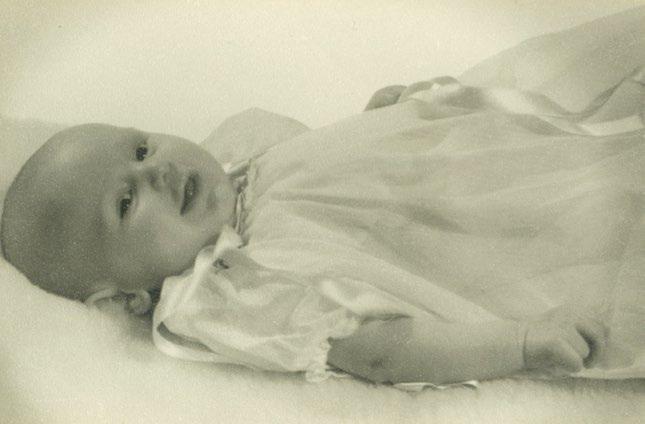
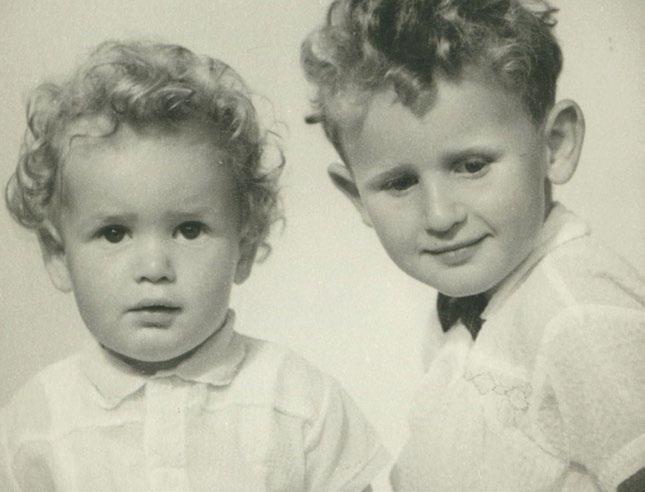
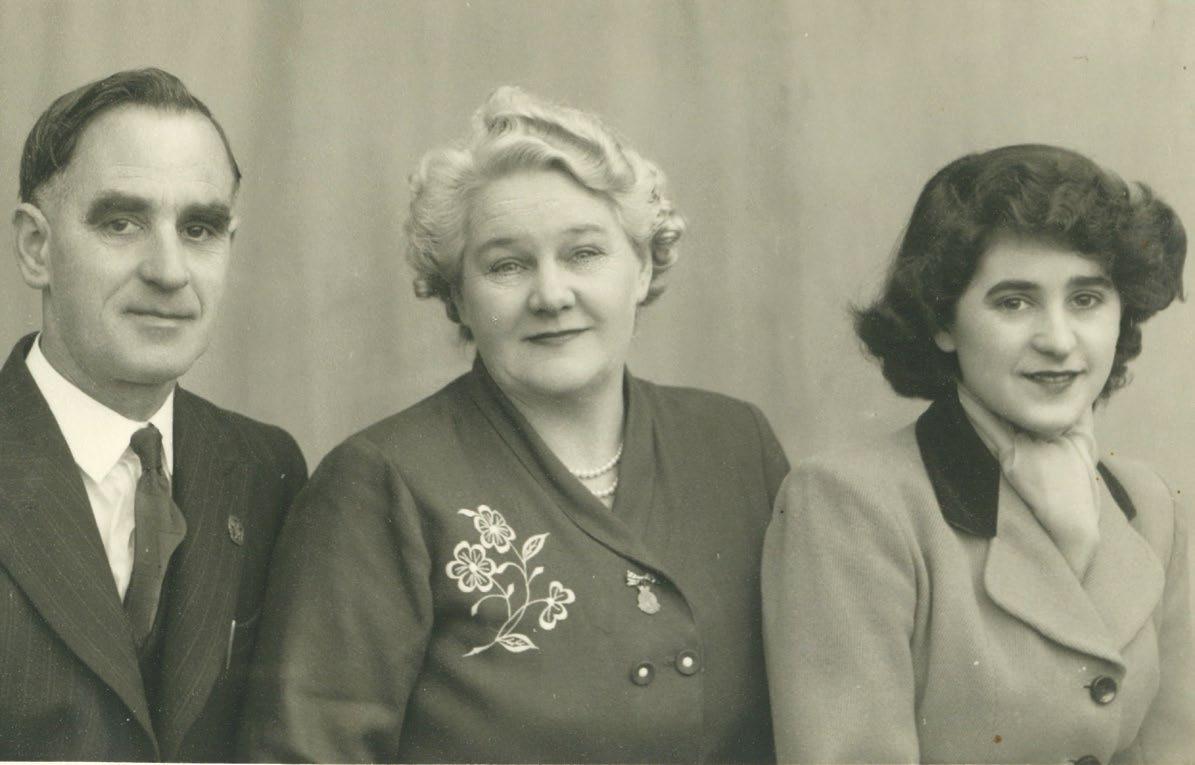


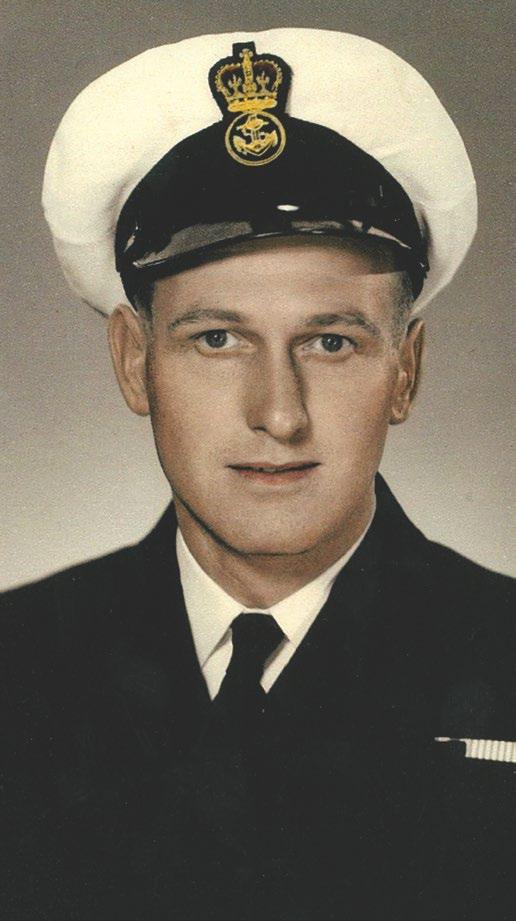

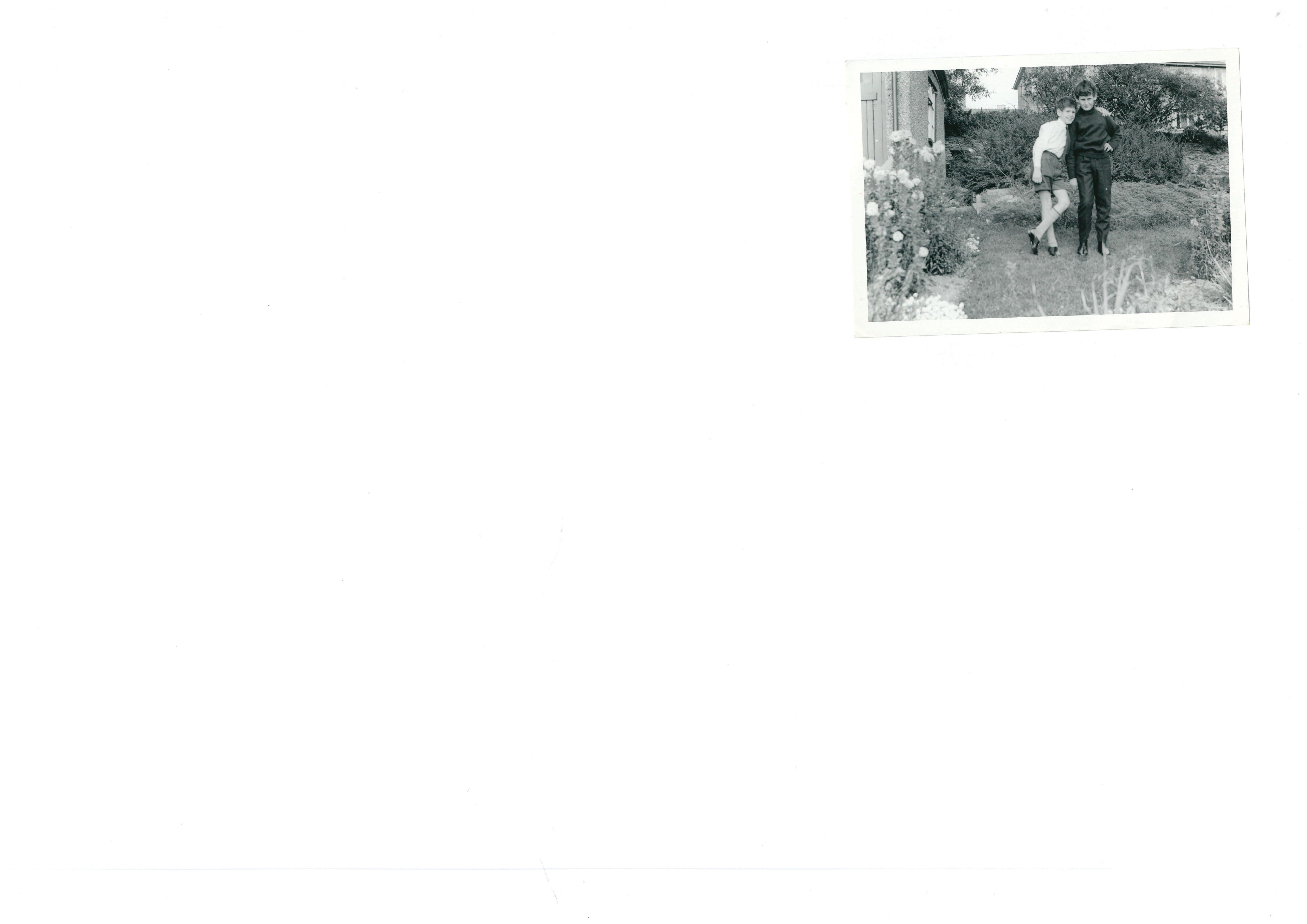
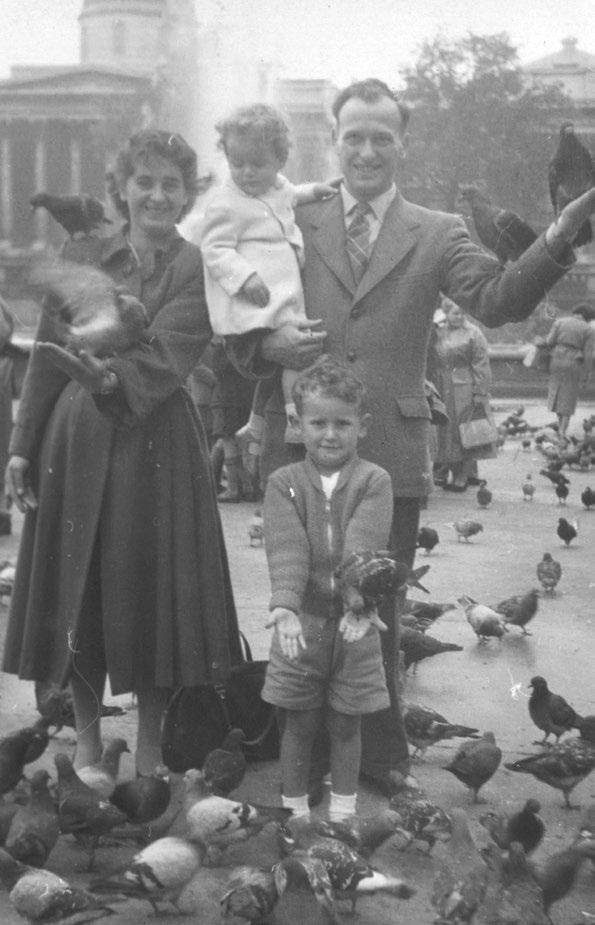
Phil recounts some early childhood memories.
“The thing I remember when my father passed away was my Mum telling me my Daddy had died. I must have been 4 or 5. I remember my Mum came in, my grandfather and uncles were there – my uncle said ‘your Daddy’s dead’ – it’s one of my first memories. I was very angry at him for breaking the news so bluntly, I remember.
My father was in the Navy, stationed in Malta for a short time and I remember visiting him with Mum. Other than that, I don’t remember anything much about my Dad.
My Mum had to go and get a job as a secretary at the school we went to at the end of the street, Elson’s Junior School. My grandfather took my Dad’s place and played a key role in bringing me up. My grandparents would come to our house four days a week and help with looking after us, cooking the meals and other home duties to help my Mum out. My mother was fantastic bringing my brother and I up.
My grandfather being an old army man was pretty strict and formal. He was strict, but at the same time he was a really fantastic man. He would tell you everything he could to guide my brother and me.
I loved to climb things. My mother was always saying she was glad she only had one like me and that my brother was a lot quieter and easier to manage. Probably links back to my yachting passion, all the rigging and so on. I was always one of the first up the mast!
One of my favourite memories is the walks my grandfather would take me on. My favourite was going on walks to Portsmouth harbour. You could watch all the ships coming in and out of the harbour. My favourite place to go was to visit The Victory, Nelson’s famous ship. I’m sure it’s how I got so interested in sailing. I was fascinated by the old ships and remain so to this day.”
While Phil speaks of the contribution his grandparents made, his grandfather Harry in particular, he also speaks of his eventual Stepfather, Derek Thorne. Derek came into Phil’s life when he was an adult, but he played a significant role in the family, as Stepfather to Phil and David and loving grandfather to all of Betty’s grandchildren.
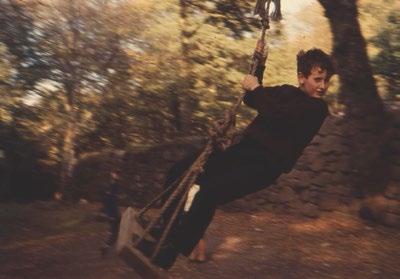
The young adventurer
Phil loved the grammar school he went to in Portsmouth. Gosport County Grammar looked over the harbour. He could watch all manner of vessels coming and going and he credits this also with fuelling his fascination with the sea. He could go to the beach and look across to the Isle of Wight and he recalls always living in close proximity to the water. To this day Phil loves his daily beach walks.
It was the military background supplied by his father and grandfather that encouraged him to join the school cadets corp
“I wasn’t that good at sport, although I did like to play rugby, (others considered Phil a good all-round sportsman) and I got fascinated by the army cadets. We’d go on camp a couple of times a year; I really liked that. I remember orienteering in the woods and going up to Champs (an army camp)”.
“We used to look up to our headmaster at school, we’d call him ‘Bonce’, he’d lost part of an arm in WWII, and we thought he was a bit of a hero”.
For quite some time throughout his schooling years Phil was keen on joining the army and thought this was going to be part of his future. When the time came to make a decision however, he was dissuaded by his mother. His father had been killed in an accident while serving in the Navy and coupled with his mother’s concerns, he was convinced not to enlist. He did say this had always been a regret. But life went on and offered many more opportunities for adventure.
“when you’re young, you’re immortal”
- Phil Barrett
His interest in both sport and cadets resulted in Phil receiving the Duke of Edinburgh Gold Award in 1971, which was presented to him by HRH Prince Phillip at Buckingham Palace. The Duke of Edinburgh Award is a programme of five sections to complete at Gold level. They involve helping the community and environment, becoming fitter, developing new skills, planning, training for and completing an expedition, and working with a team on a residential activity. Phil did judo as a pursuit and underwent expeditions and social work to qualify for the Award as well as first aid, firefighting and orienteering programmes.
The Duke of Edinburgh programme is all about setting personal challenges and pushing personal boundaries. Attributes that came naturally to Phil and would serve him well in his sailing and business careers which would follow.
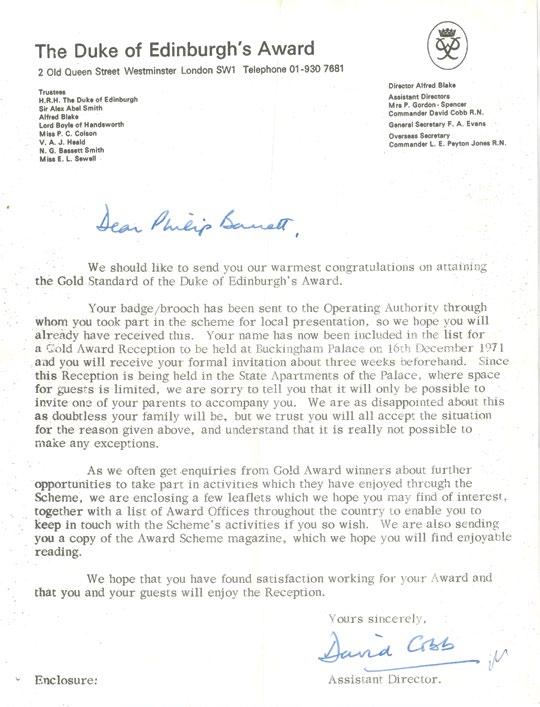
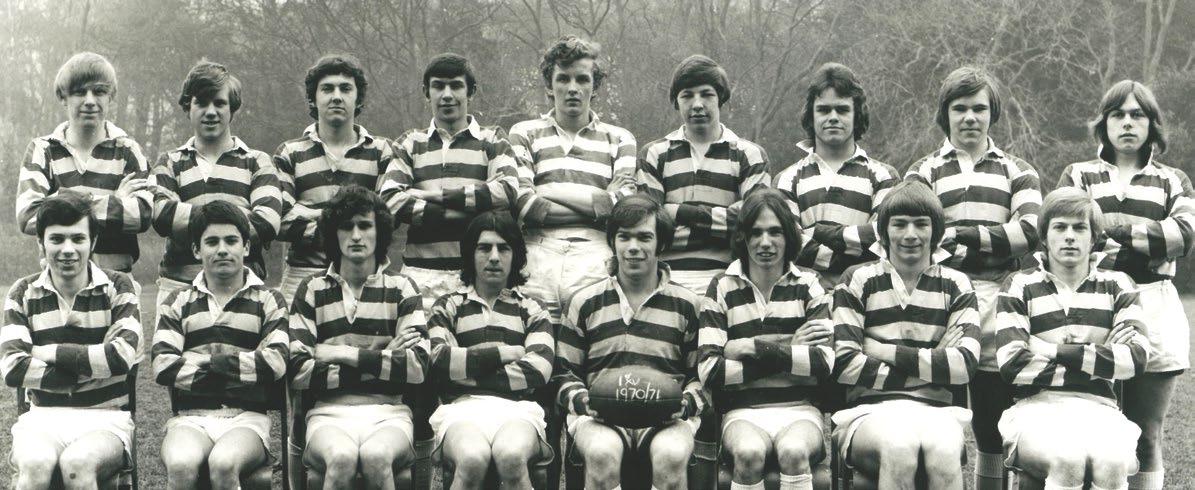
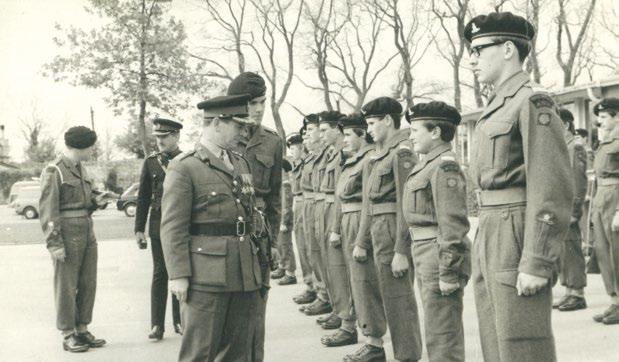
Has the inspector stopped in front of Phil for some reason?

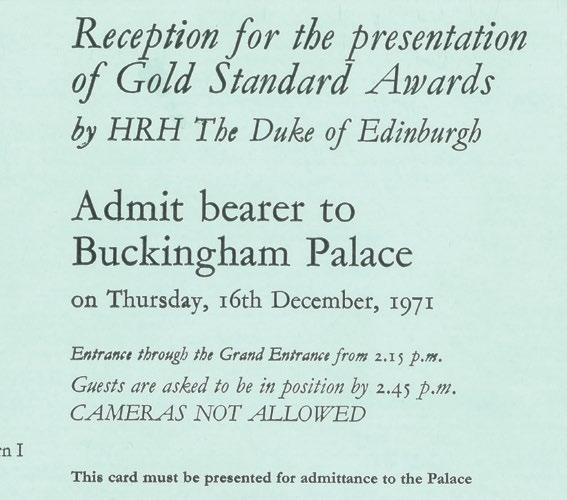
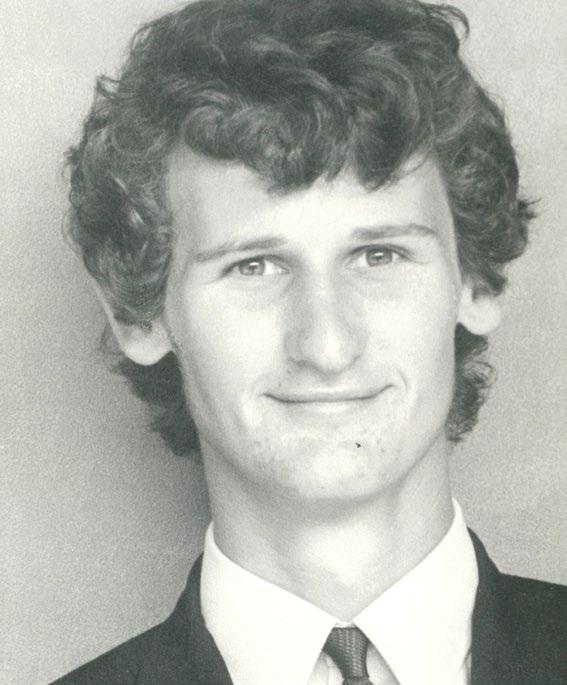
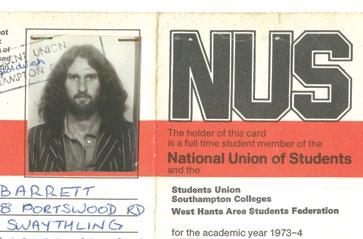
After grammar school Phil moved away from home to attend Southampton College of Technology where he would study civil engineering and draughting. Southampton was also a large maritime city on the coast of southwest England. Phil moved into a students’ share house and adult life had commenced in earnest. It was in the 60’s and 70’s, a seminal period in British music. He discovered all the best parts of student life – parties, concerts, festivals, mind altering substances, and lots of music - Peter Green and early Fleetwood Mac, Jethro Tull, Led Zepplin, Pink Floyd and many others as can be seen in Phil’s ticket stubs (at right).
“I loved music and the rockstars of the day. I’ve got memorabilia of all the concerts and festivals I went to in those days. I once spent eleven quid (a week’s pay!) on a pair of snakeskin platform boots. I’ve still got them too.”
In what will be revealed later, Phil was to become somewhat of a rockstar himself, as in the yachting fraternity sailors who race the oceans are called ‘rockstars’ and Phil was to become one the best known and respected in the industry. Ironically, he was to skipper Drum, owned by real rockstar Simon Le Bon, the lead singer of Duran Duran.
Like many young people, the lure of music, college and a new circle of friends, somewhat distracted him from his former ambition of a military life. Instead, life took a new turn. He pursued his studies,
while musing on what adventures life might have to offer. He completed his studies with a Diploma of Building and Construction and from 1973 through early 1979 worked with a number of structural and consulting engineering firms while enjoying life in England’s south-west.
As a draughtsman Phil worked in steelwork design and fabrication. Working on architectural plans for industrial buildings and even the plans and elevations for the Royal Palace in Saudi Arabia.


Celebrating Southampton’s FA Cup win in 1976
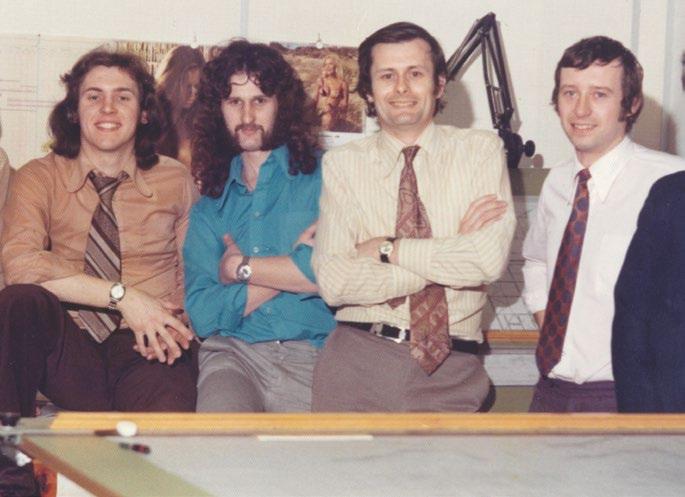
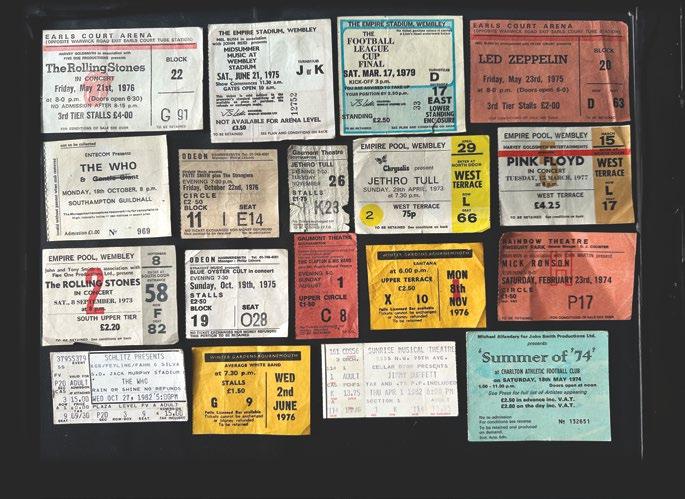
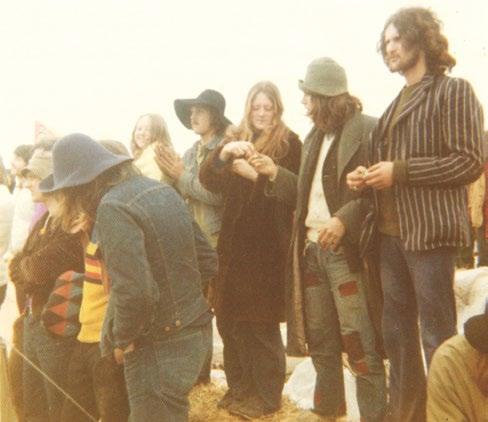
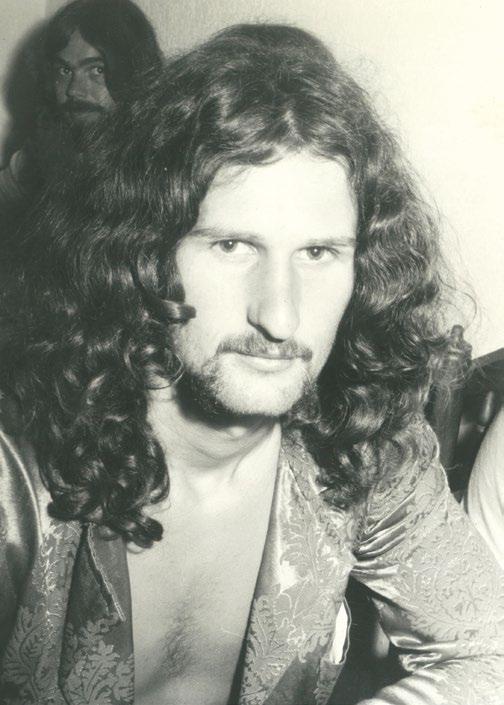
“After a short while in the office, I was staring out the window thinking there’s got to be more to life than this. As if reading my mind, one of my colleagues then said to me “I’ve been here for twenty years and I’ve still got twenty more before I can retire.”
That comment encouraged Phil to quit his job, lured by the wide world and stories from a few friends who had been to Africa and other exotic places. So, with nothing but his dreams for adventure, he decided to go travelling at the age of 23.
From his UK base Phil travelled the world. He traversed the USA hitch hiking twice, and on what was to be a defining life-period, Phil tracked the hippy trail to India, via the Greek Islands and went overland through Türkiye, Iran, Afghanistan, Nepal and Pakistan.
His adventures started with a roadtrip through the USA in 1975, and although there are no photos to document his trip, Phil revisited some of his favourite spots in the following years.
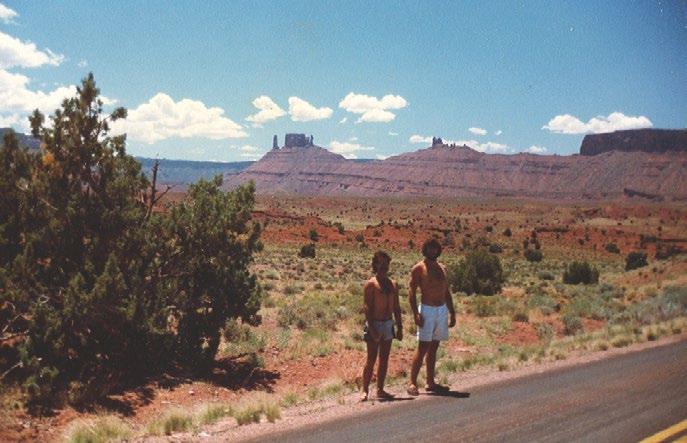
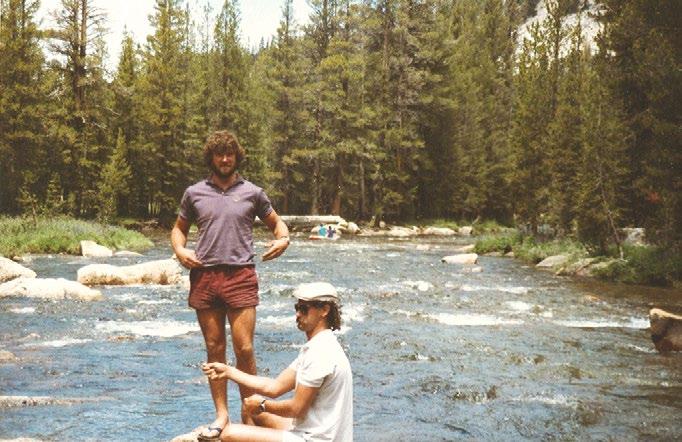
The whole experience left Phil in awe of the Grand Canyon’s size, colours and overall beauty.

Phil set off from Ottawa, Canada on September 3, 1975, bound for Toronto where he visited Niagara Falls, described by Phil as
“very impressive, especially from ‘Maid of the Mists’ and the scenic tunnels”
Phil’s crossing into the US commenced with a thorough grilling and search by Customs. He recalls travelling through Detroit and it looking like an evil place, but then he was on to Chicago and his impression of the USA changed as that city revealed its character and aesthetics.
Next to Denver, Colorado including a visit to Colorado Springs. Then onto Cheyanne and Idaho Falls via Salt Lake City, passing through The Rockies where Phil notes fantastic scenery through the Devil’s Eye and Gate.
Phil hitched rides and caught buses when he wasn’t picked up through Idaho and Utah and The Teton Mountains. A truckie drove Phil up through Yellowstone, visiting the Gorge and Old Faithful along the way. Next up was the West Coast to Spokane and Portland, Oregon and then down again to San Fransisco where he checked in at the YMCA.
“A very cool place, I met some good people and did tourist things.”
A bus to Los Angeles was next, and the usual tourist haunts like Universal Studios and Disneyland. Phil recalls downtown LA being pretty rough, so he didn’t stay too long. Then a trip down Highway 1 to San Diego completed the West Coast trip over a couple of weeks.
Across the desert country to Las Vegas, a place where Phil noted people’s infatuation with gambling and the glitz of the Casino strip, visiting MGM Grand and Caesar’s Palace.
After a visit to Hoover Dam, it was onto the Grand Canyon whereupon Phil decided to hike to the bottom via the Bright Angel Trail carrying only a sleeping bag, only to be told by rangers he had to get back out as he had no camping permit. Trouble was that it had gotten dark on the way back and Phil had to negotiate a narrow cliff path and suspension bridge 100 feet above the Colorado River. Another attempt the next morning revealed just how scary that journey had really been. He went on to the South Rim which he describes as a huge climb lasting over five hours.
“Don’t think I’ll do that again, but the view was just incredible”
Next, Oklahoma by bus
“with stunning scenery through the desert with huge multi layered red cliffs as far as you could see”.
Oklahoma itself did not impress, so Texas was next, then to Houston via Dallas. Houston did however impress the adventurer in Phil, with a tour of NASA, the Apollo lunar modules, Mercury and Gemini capsules.
Then on to New Orleans, finding a place in the French Quarter. Phil happened to end up at the new Superdome and caught a game of NFL between the New Orleans Saints and the Bengals. Some drinks and music down Bourbon Street followed the game and Phil caught a late bus to Orlando, Florida. Another Disneyland visit before heading up the east coast through Georgia, the Carolinas, Washington, New York, Boston and back to Ottawa.
Phew! And that’s the first of Phil’s travels around the world!
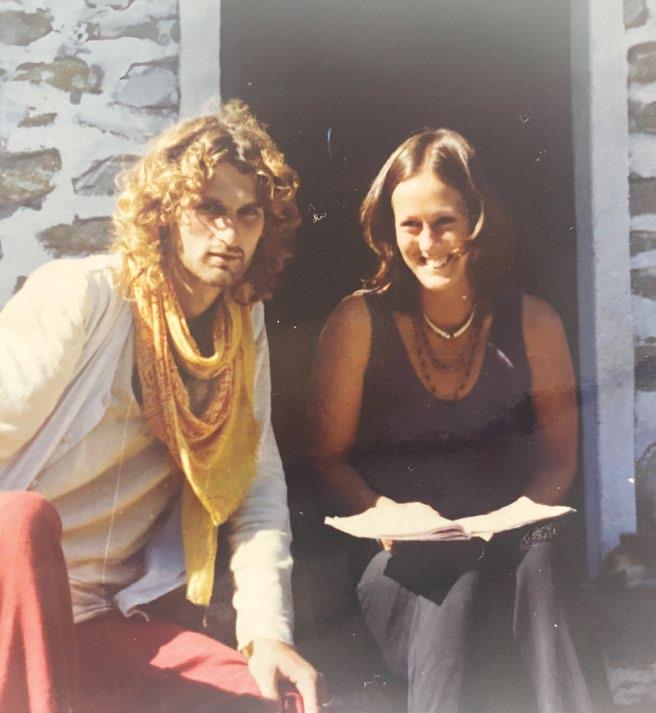

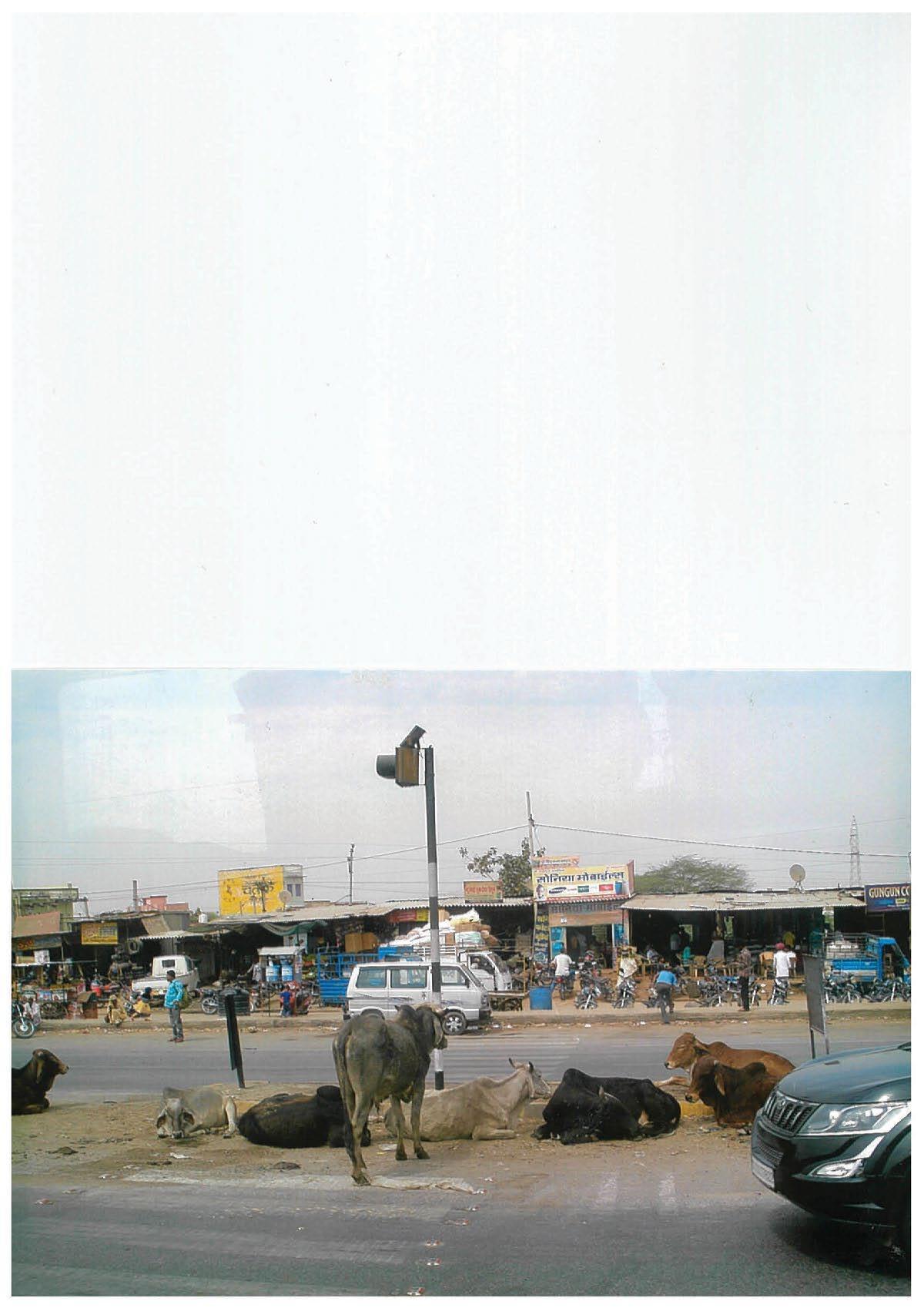
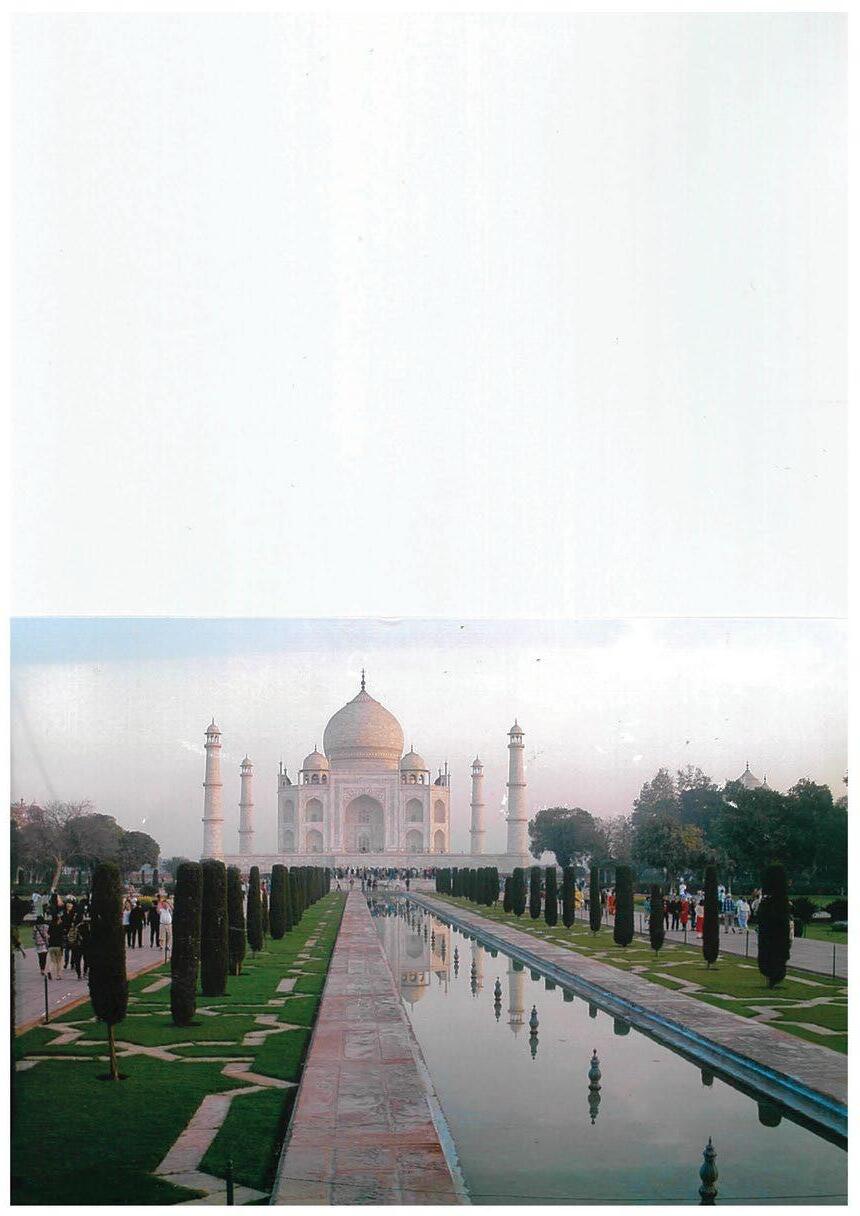
sunset in Goa
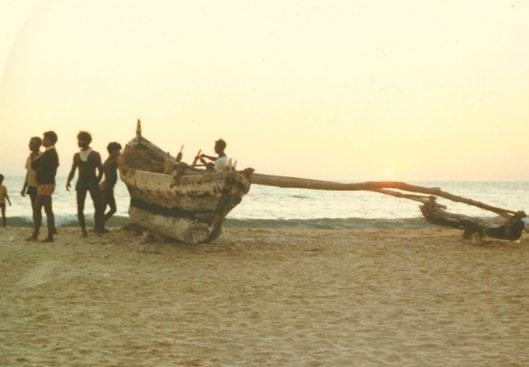


Seeking to push his boundaries, in 1977, after spending that Summer in the Greek Islands, Phil set out to India via Turkiye and did not return to England until 1978.
The journey ahead would not be limited to a single mode of transportation but would include an amalgamation of trains, buses and generous (if not sometimes lecherous) truckies who responded to a roadside thumb in the air. Phil and his travelling companion, girlfriend Sue, would experience an epic journey. Their route commenced in Istanbul and took them through Iran, Afghanistan, Pakistan and down to Delhi, a journey spanning 6,553 kilometres. Then to Katmandu and Pokhara in Nepal where they trekked through the Himalayas, and back down to
They would not share the whole trip together, going separate ways at different points, but would meet up here and there.
”The whole trip was amazing, epic in fact. After a fantastic holiday in Greece and Turkey, mainly hitching with Turkish truck drivers, I remember being at the Iranian border crossing and the guards bailed me up and offered to ‘buy’ Sue and I could go on my way. I told them to f**k off and they let me go, but not until they’d been bought beers and brandy. Funny how that particular phrase is understood in any language! Bit scary at the time though! After seven hours sitting around at the border, we got a lift from two Pakistanis from England. We were glad to get away from lorry drivers for a while. They were as nutty as the border police!”
“The first day in Afghanistan we arrived in Herat and had our first experience of seeing women completely covered up and men in turbans. Kabul was pretty heavy and we didn’t stay long. We spent most of our time there stoned”.recalls Phil.
Phil stayed long enough to visit one of the trip’s highlights - the Buddhas of Bamiyan - two 6th century monumental statues carved into the side of a cliff in the Bamiyan valley of the Hazarajat region of central Afghanistan. Situated 130 kilometres (81 mi) northwest of Kabul at an elevation of 2,500 metres (8,200 ft).
“You could climb up the middle of those huge edifices…. I managed to get to the top”.
Phil’s journal tells us that a very rattly bus then took them to Peshawar in Pakistan, then through the Khyber Pass into India and to their first stop, Delhi, where our travellers were hampered by severe cases of Delhi Belly. Not a positive initial impression, but they would return. Agra and the Taj Mahal were next and some strange sites in Sarnath, the place where Buddha gave his first sermon.
India greeted them with bustling cities, sacred temples and awe-inspiring landscapes. From the snow-capped peaks of the Himalayas to the sun-kissed beaches of Goa, Phil and Sue would witness the breathtaking diversity of India and its people.
After crossing the Ganges at Patna they connected with a bus towards Katmandu, Nepal, where they got a trekking permit and headed out to some spectacular mountain scenery from Pokhara. Phil noted that
“Nepal is like an oriental Swiss version of 17th century England”.
After their Nepal leg, and another bumpy bus ride to the Indian border, Phil bid farewell to Sue at Kanpur station with loose plans to meet up again in Goa.
“Feeling pretty lonely at the moment. We had great times together, especially the last month in Nepal.” Phil notes in his diary.
Once in India by himself, Phil’s travels included Agra, Bombay, Goa, Shapora, Humpi, Bangalore, Kochi, Jaipur, Madras, Mahabalipuram, Pondicherry, Madurai, Kerala, Ahmedabad and back to Delhi with many, many points in between.
“Train travel in India is an adventure in itself. I remember having to get up on the luggage rack to get some sleep!”
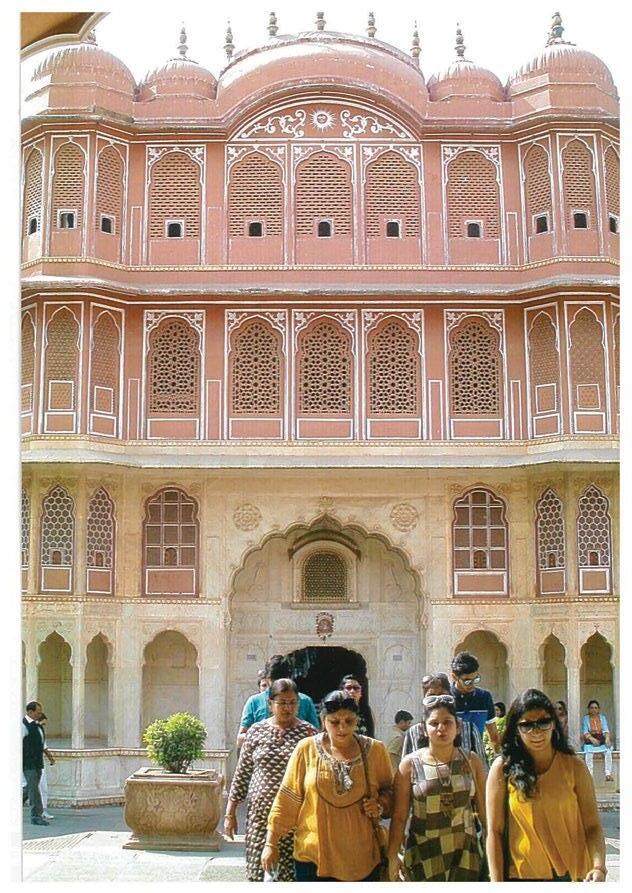
Beach parties were a staple in Goa.
“And the crowds on the platforms! It’s amazing you even get on the train through the crush. But somehow you get swept up in the throng of hundreds of locals.”
While enjoying Goa, Phil writes “the next three days get kind of rolled into one as I spent them in a kind of ‘happy, not doing much’ time, being pretty stoned! Christ, it’s not so hard to just sit around stoned all the time. Just going to a chai shop someone’s always passing you a chillum!”
“You walk along the beach in the direction of the lights and music and you’re there! One long line of Indians with their tea shops and food stalls greets you before passing into a small gathering of people before the stage on the beach. Fireworks going off all around you while groups of people sit around candles passing around an endless assortment of joints and chillums. Six in the morning and people still dance at the front while others have not even stirred after crashing earlier”
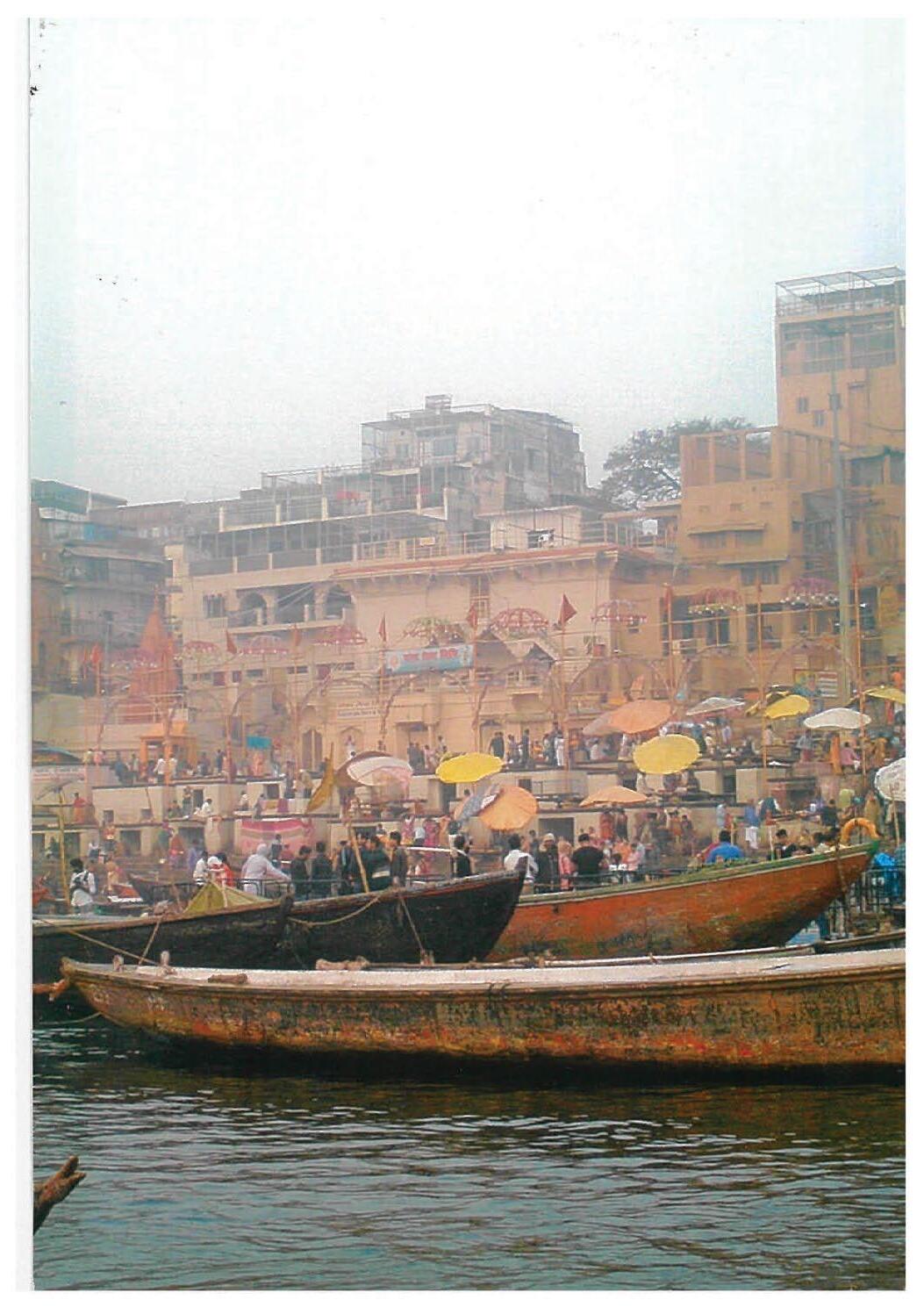
“In Bangalore we saw a Ravi Shankar concert and boy was that pretty good. First half not that great, but we had a chillum at half time and that made all the difference.”
Phil describes that out of all his experiences, India was so important to him. He points us to a quote from his journal that he says goes pretty close to articulating his impression.
If we were to try to set within these pages a number of reasons why you should visit India, we would be holding both you and our country in contempt. India is all things to all men. All we can hope to do is put before you a few observations on places and things and say, here it is – it is for you to see.
”Visiting cities like Banaras on the Holy Ganges and Madurai in the south is a sensational experience – they’re so intensely religious, so totally bound up in 5,000 years of living theology and philosophy that even the most
you a few observations on places and things and say, “here it is – it is for you to see”.
Phil’s journals are full of passages describing his conflicting emotions. .
In reading Phil’s journals, we are reminded of passages such as
“India just f**ks me up. You can have enough of the people and the environment and then next thing you walk around a corner and see such magnificent buildings and places.
There are so many contradictions. From public cremations and corpses floating down the river, extreme poverty, to such magnificence. India evokes many emotions”
Upon leaving India, Phil’s journal reveals this thought….
”So, this is it eh? Left India in the morning and crossed over into Pakistan on the train. Quite a shame as it’s like losing a friend. Still, I’ll be back sometime.”
‘Philthy’ BARRETT
Ocean yacht racing offers a unique blend of adventure, competition, and appreciation for the beauty of the ocean.
Getting into yachting was accidental for Phil. Returning to the Mediterranean from India in 1978, he roamed about the sparkling seas and earthy cultures of the region once again. It was here, whilst sleeping on a beach in Greece, that Phil was given the opportunity to deliver a yacht from the Mediterranean to Antigua, sailing via Gibraltar and the Canary Islands. This was an opportunity that ultimately shaped the course of his life and he never looked back.
The vastness of the open water and the feeling that it brought of being disconnected from the constraints of daily life evoked a sense of freedom and liberation in Phil Barrett. And Phil, having tasted the exhilaration, wanted more.
Over the next 25 years, Phil was to sail almost 200,000 miles around the world’s oceans.
At the end of each yachting season, owners would take their yachts to the Caribbean and Phil grabbed this opportunity with both hands.
“Really just by hanging around and putting your hand up when help was needed was all it took to get me started on my grand sailing adventure. Doors opened from here.”
“My first Atlantic Crossing was on Edelweiss, (a Swan 55) in September ’79, sailing the 5,000-mile journey across to St Lucia, Antigua. I’d met the boats skipper, Piggy in the Greek Islands.”
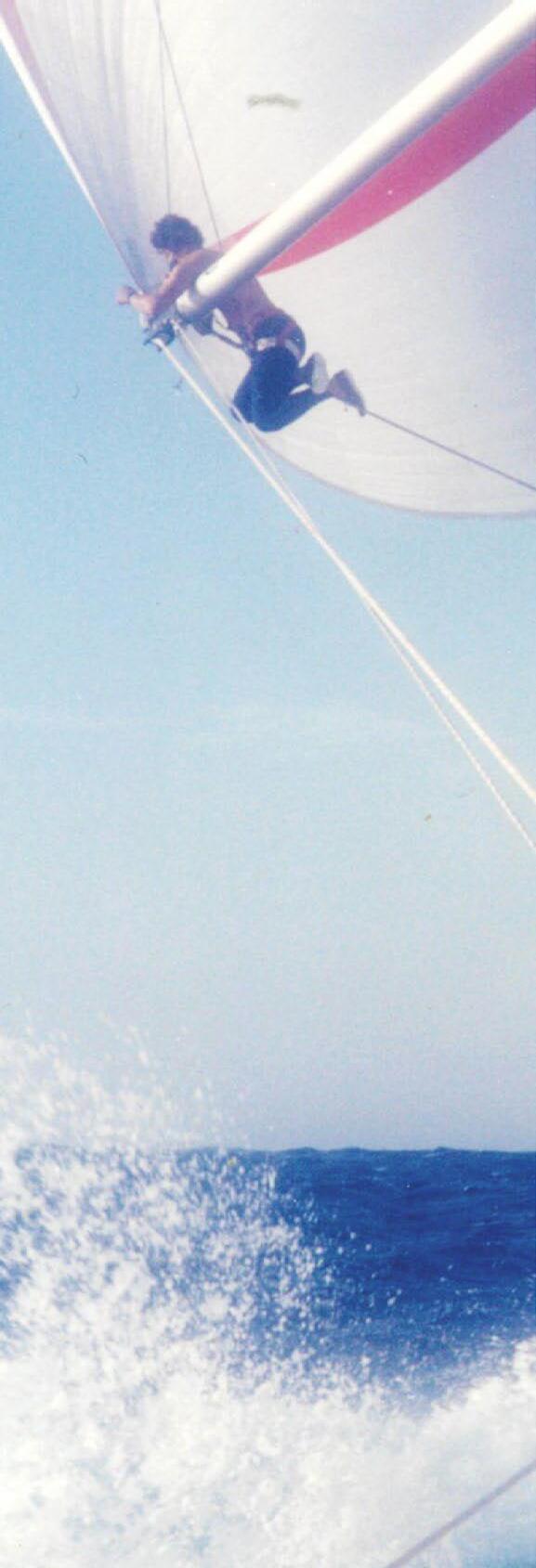
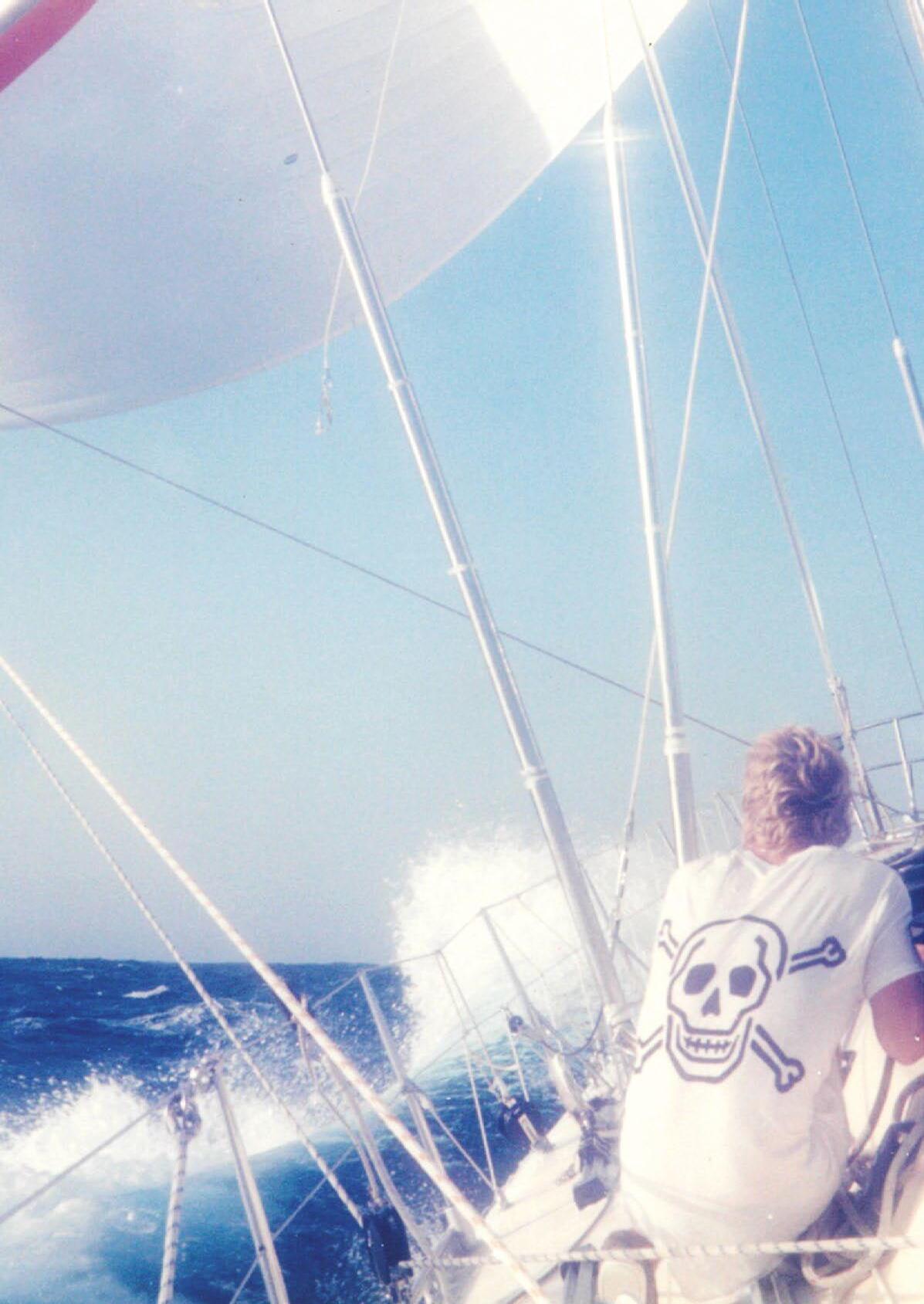
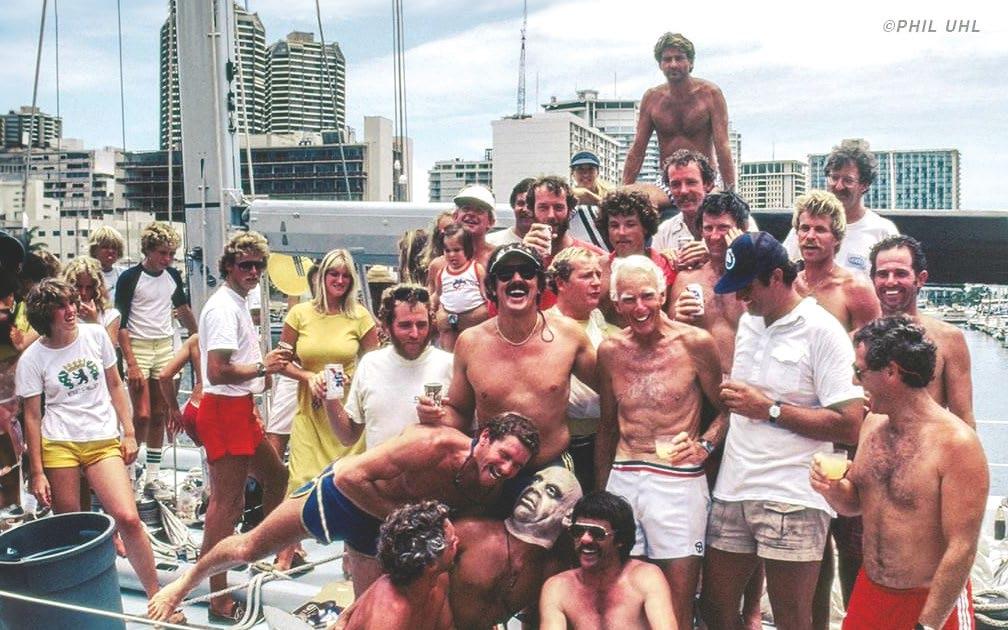
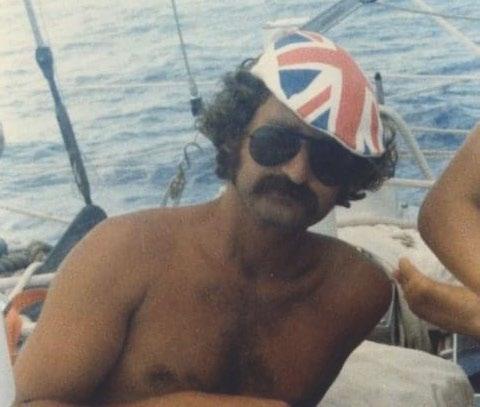
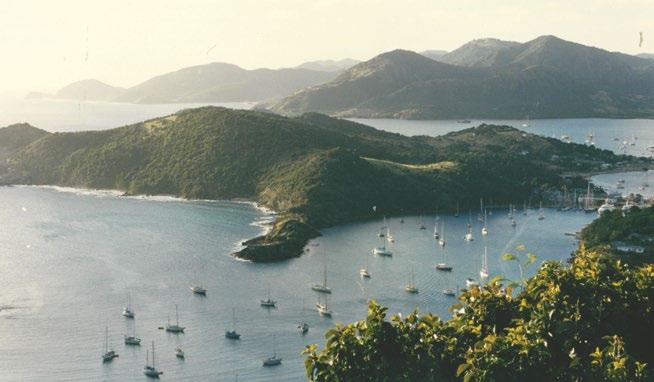
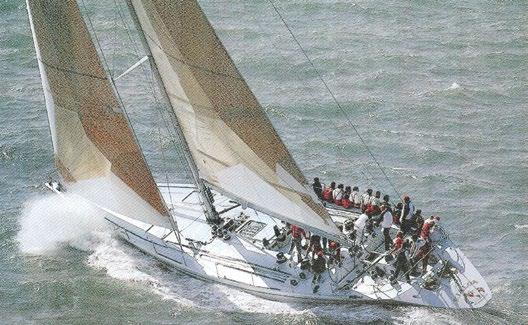
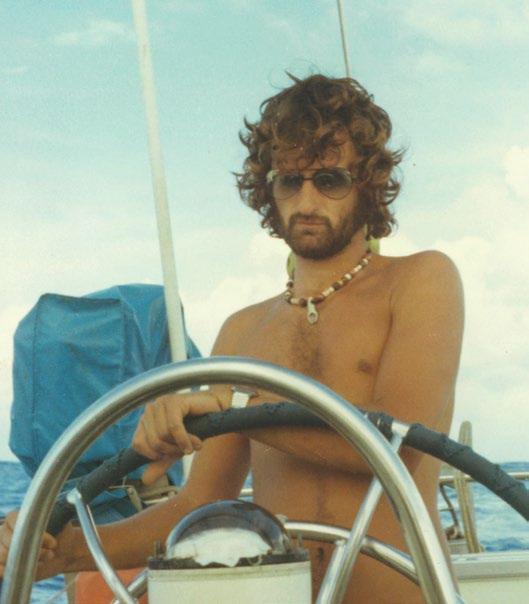
Once in the Caribbean Phil got an opportunity to crew on Mistress Quickly, competing in the Antigua to Redonda Race and finishing first - a great start to yacht racing for Phil. Next a significant turn, sailing up to Newport, Rhode Island, USA on Bamboushay, a Swan 43 in May ’80.
It was not long until Phil recognised the potential of crewing on big boats. It offered exciting possibilities and adventure to one who was available, capable, reliable and crucially, a team-player. All of which Phil proved to be in the coming years.
Phil had tasted the exhilaration of ocean racing and it was getting into his blood. Hanging around Newport in February ‘81, he got the last crew place on Ondine, an 80-foot maxi yacht which was to compete in the Newport to Bermuda Race. His open ocean racing experience began.
Following the race, the owner was taking the boat to South America to enter a couple of races and then sell it to the Argentinian army. While on that trip Ondine finished first in the Buenos Aires to Rio de Janeiro race in February ’81.
“The yachting community, like many specialist areas, is small and tight. Once one gets a reputation as competent and reliable, more and more opportunities emerge”
“When I got onto the yachts, I was always one of those confident to climb up the mast. I was always willing to do the hard stuff, I loved it. It is the greatest feeling being up there. I was lucky that I had no fear. I always thought if you get the chance to do something, put your hand up. Some people thought I was a bit full on, but it stood me in good stead”
The remainder of 1981 was taken up racing in the Caribbean, then back on Mistress Quickly from England to Sardinia, linking up with Ondine again for a cruise to Detroit, USA, via Gibraltar, Saint Pierre and Miquelon.
Phil spent the early part of 1982 racing in the SORC (Southern Ocean Racing Circuit) based out of Florida.
He sailed to Hawaii, via the Panama Canal on Kialoa IV, a prestigious gig in the yachting world, winning the Round the State Race in record time. Kialoa IV and Kialoa V were World Maxi Yacht champions 5 of the 8 years they raced from 1981- 1989. This race was also called the Clipper Cup. From there it was on to San Fransisco.
Phil’s sailing expertise grew. Through the early 1980’s Phil sailed routes throughout the Caribbean, the Mediterranean, and the Atlantic & Pacific Oceans on famous boats such as Blizzard, a Frers 51, War Baby, S& S 61, Kialoa III & IV, Huaso, a Frers 81, Cannonball Frers 56, Artemis, a Peterson 51, Nirvana, a Pedrick 81, and Condor of Bermuda to name most of them.

Throughout a life rich in adventure and shenanigans, Phil Barrett has earned the admiration of many people
I first met Phil(thy) Phil Barrett at Antigua Race Week in 1982.
I was just a nipper on a boat called S.Y. Amazon. The Captain, Ben Mennem and his lovely partner (now wife) Anni were dear old friends of Phil’s. Phil was racing on Mistress Quickly at the time.
Now, there is not much privacy on race boats.
I had been food shopping in Antigua and had just returned to the boat. I was putting away supplies down below and heard wild animal noises coming from the mid cabin of Amazon. I raced back on deck and asked Ben what the hell was going on down there. He said with a wink and a smile that we were giving an old mate a bit of privacy.
A while later emerged, a moustachioed, sarong-wearing, crooked-nosed Pommie dripping with sweat, whom I would soon come to know as Philthy Phil. We’ve known each other for 43 years now and have been the best of friends.
(The other occupant of the mid-cabin remains a dear friend to this day)
Phil and I have raced together on Maxi yachts all over the world, and against each other in the Whitbread Round the World Race. We have been through many a Rum Front. I could fill a book with stories of our adventures together. This is one of the many stories that we are lucky to have survived, and still laugh about.
During the Big Boat Maxi Series, San Fransisco, 1984 Phil was crewing on Artemis and I was on Nirvana.
Day racing on San Fransisco Bay had been hard-fought and thirsty work. Knowing that the next day was a lay day, all crews were ready for a QLD (quiet little drink), so we huffed and puffed our way up a particularly steep hill to a favourite local watering hole. Drinks flowed, tall tales grew taller with every passing round, and by midnight our Rum Front was like a Force 5 Hurricane.
There were a few local barflies at the start, but all had left. The bar finally closed, and it was time to make our wobbly way home. Phil and I were stumbling down the steep hill when Lo and Behold we spied a shopping trolley, wedged behind a car. We looked at each other and, great minds thinking alike, we silently agreed this was the best and fastest way down the hill.
Phil decided that since he was the oldest, he would stand at the back and steer, and my drunk and sorry ass got plunked into the basket.
Ready set go – off we went! Within seconds we realised that this thing had been fine-tuned by a Formula 1 pit-team. It was running straight…. and F-A-S-T. Within seconds we realised that we were heading for a major 4-way intersection, with many cars going in all directions.
My arms and legs were flapping in the wind as I screamed Phil STOP!! Phil TURN!! No reply from Phil as the STOP sign whizzed past at 50 or 60 mph amongst cars honking and swerving, screeching brakes, we somehow made it across the intersection without dying where, typical for San Fransisco, there was a massive bump before the road continued further downhill.
We were Launched into the air, ET-style, in our shopping trolley, Phil still hanging on for dear life, and me still stuffed in the basket, legs and arms flailing!
Time stood still as we sailed through the air… until finally it landed on its four wheels… and the bloody thing …… kept on going straight down the hill!!
This ride had to end somehow, whether in the San Fransisco Bay or otherwise.
Our F1 Shopping Cart finally hit a pothole in the road, and within an instant we found ourselves rammed up the backside of a parked Porsche. I knew our journey had finally come to an end when I saw Phil flying above me as we were both catapulted over the top of the Porsche and landed in a magnificent heap on the footpath. We rolled around in fits of laughter for a bit, made sure nothing was too badly broken on either us or the Porsche, and somehow made it the rest of the way home. The rums must’ve saved us.
Cedric (Eric) Dewey
Cedric and his wife Melissa remain close friends to this day and live in Sydney.
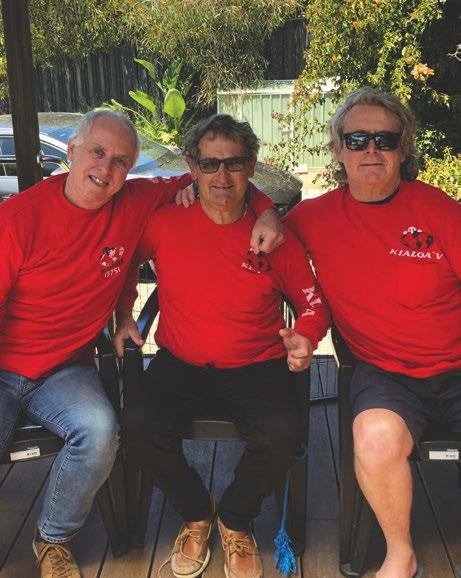
I first met Phil in 1987 in Palma, at the end of summer. I had been in Mallorca for a year, doing odd jobs, having a load of fun and saving no money! I was in a bar and met some yacht crew, who were from a world I knew nothing about, apart from a bit of sailing in my teens.
One of them mentioned a yacht called Desperado that was needing crew to take her back to the UK for a winter refit. I found Club de Mar and then found Desperado.
I’d never seen a yacht so big up close. Phil was in the cockpit, called me onboard, offered me a beer and we got chatting. We instantly got on and he offered me the place onboard for the delivery.
The one condition was “if you’re a pain in the arse, I’m leaving you in Gibraltar when we stop to refuel”!!
That never happened and we arrived in Hamble a week or so later where I helped out for a few days, after which it was time to go home and make peace with my parents after going AWOL from college two years before.
Phil gave me a lift to the station and as we said our goodbyes he said, “haven’t you forgotten something?” I said no as he pulled out an envelope and said, “you get paid for this by the way”.
A few days later he rang and offered me six months yard work, at the end of which I got the deck hand job on Desperado and off we went to Scotland. It completely changed my life for the better from then onwards.
I’ve always felt massively grateful for Phil giving me the chance of a better life. Thanks Phil!
Martin ‘Nipper’ Parry
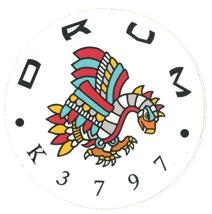
By 1985 Phil had been invited to crew as a Rigger on British rock star, Simon Le Bon’s 80foot yacht ‘Drum’, a Holland 78 maxi.
Phil’s career on Drum started spectacularly and potentially lethally, with Drum competing in the 1985 Fastnet Race.
The Fastnet Yacht Race tracks the southern English Coast across the Celtic Sea around the Fastnet Rock and back to Plymouth. It is famous for the 1979 Fastnet race disaster, when more than 70 boats capsized and 19 sailors died, and in the 1985 race nearly half the fleet retired.
Drum was one of the favourites to win the race, but the boat lost its keel in the English Channel. When the structure failed, Drum capsized. Miraculously all 24 crew were all rescued after a rather harrowing pre-rescue ordeal.
“I was thrown out of my bunk and across the cabin. As I came to, I instinctively headed for the hatch and swam out from under the upturned boat. We managed to get everyone out in one piece, Phil recalled with a little help from some fast-thinking crew, and bit of luck and the 771 Royal Naval Air Squadron!”
Others including Simon, were underneath the boat for forty anxious minutes until help arrived.
Simon Le Bon recounts the capsize to the BBC
A race against time commenced to have Drum repaired so it could compete in what is famously known as the Whitbread Round the World Race in 1985 - 86. Phil proved an invaluable crew member in this process contributing to the salvage and repair effort by rescuing anything that could be found on the broken mast that were valuable as spares before the mast was replaced with a new one. The rest of the crew sorted what had been salvaged from the boat. A herculean effort saw a brand-new Drum emerged from Moody’s boatshed in Portsmouth five weeks later ready for testing.
If we could escape the Fastnet capsize, we were somewhat emboldened and we approached the Whitbread adventure with excitement. It took a while for Simon to re-join the boat but he was glad he did. As he said, the near disaster had welded a bunch of competent sailors into a band of inseparable sea-brothers who would stick by each other come what may.”
Fifteen boats started out from Southampton on 28 September 1985 for the around-the-world race.
The Ocean Race is a yacht race, held every three or four years since 1973. Originally named the Whitbread Round the World Race after its initiating sponsor. In 2019 it was renamed The Ocean Race when sponsor naming rights were dispensed with.
Though the route changes to accommodate various ports of call, the race typically departs Europe in September - October, and in recent editions has had either 9 or 10 legs, with in-port races at many of the stopover cities.
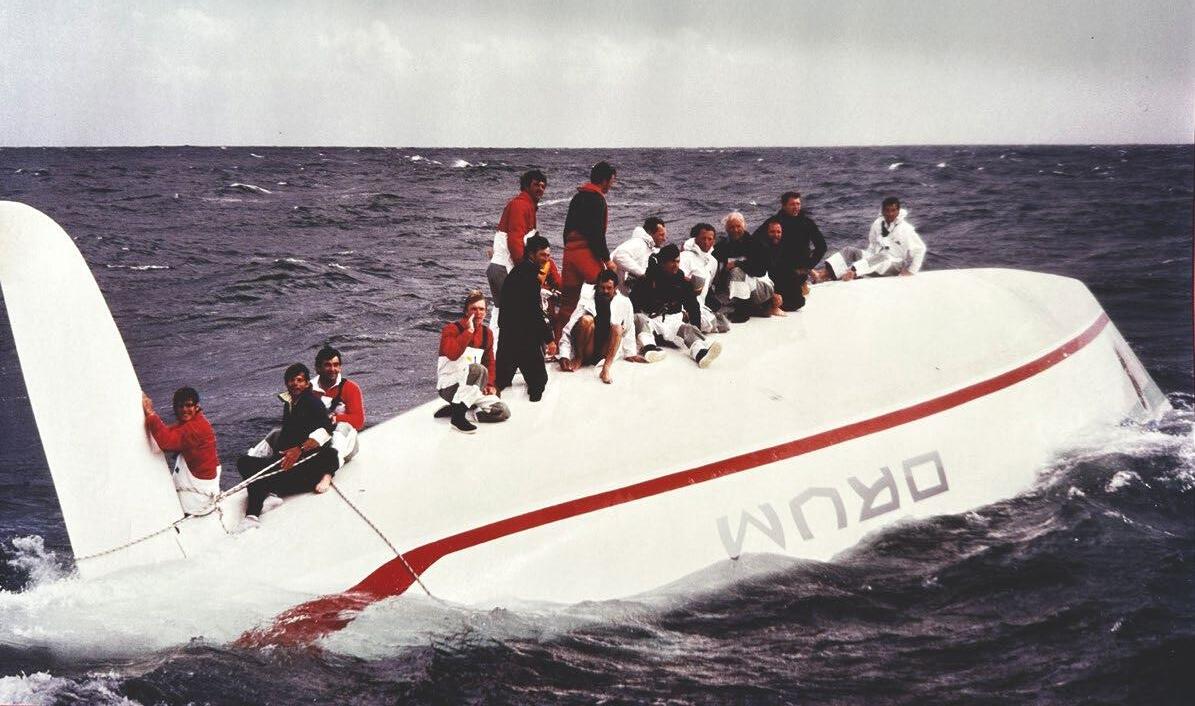
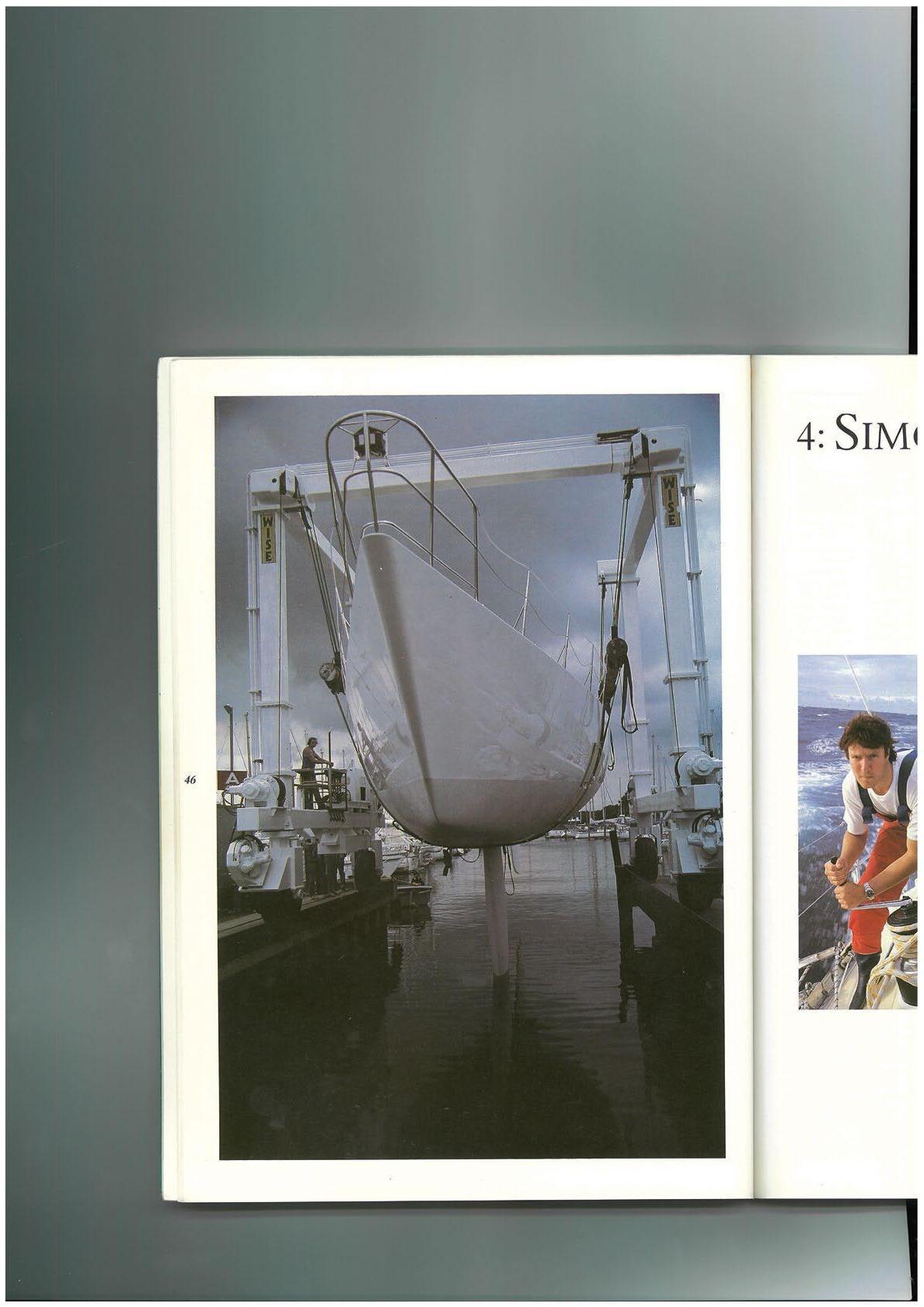

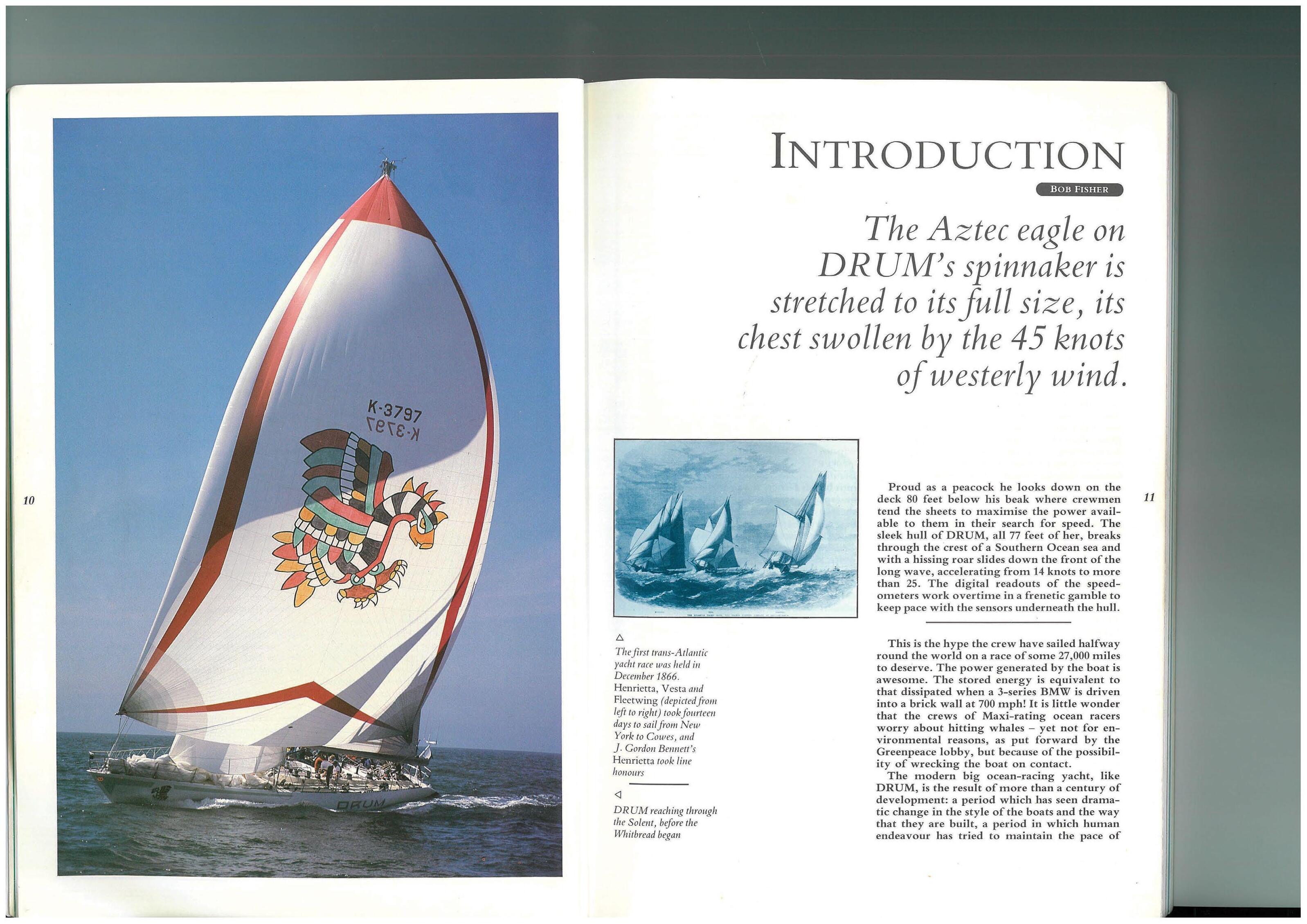
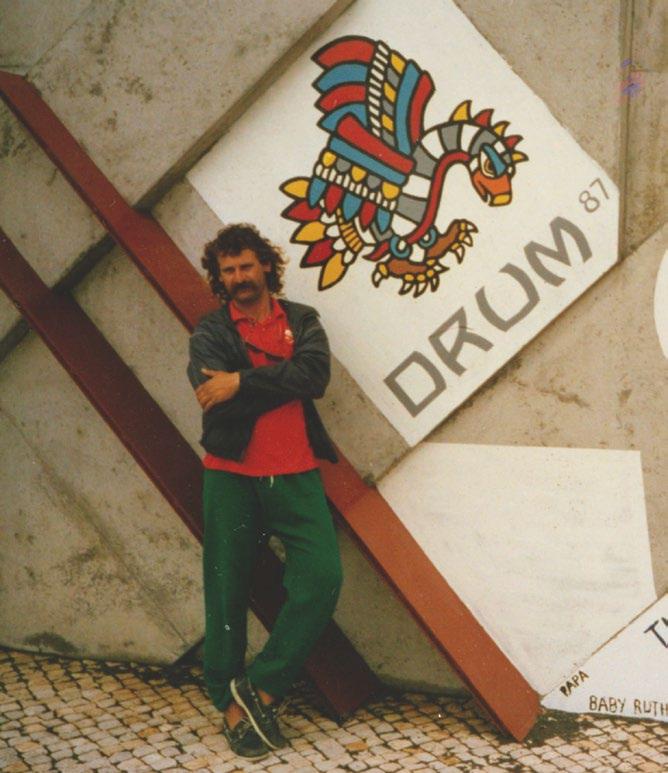
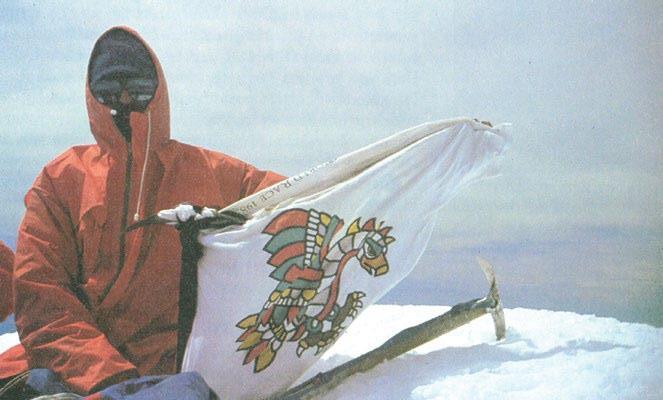
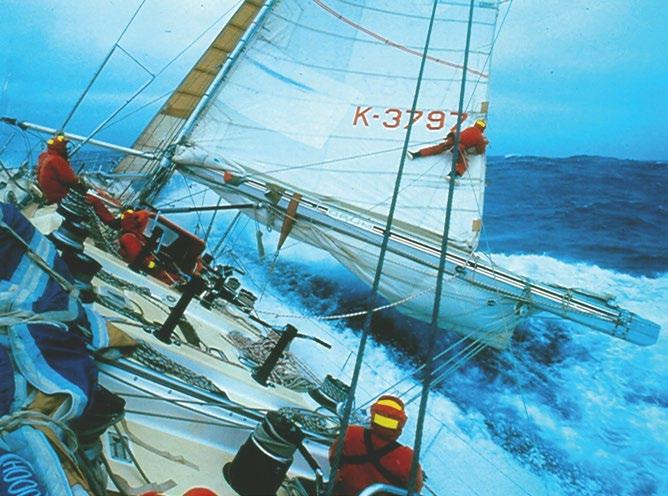
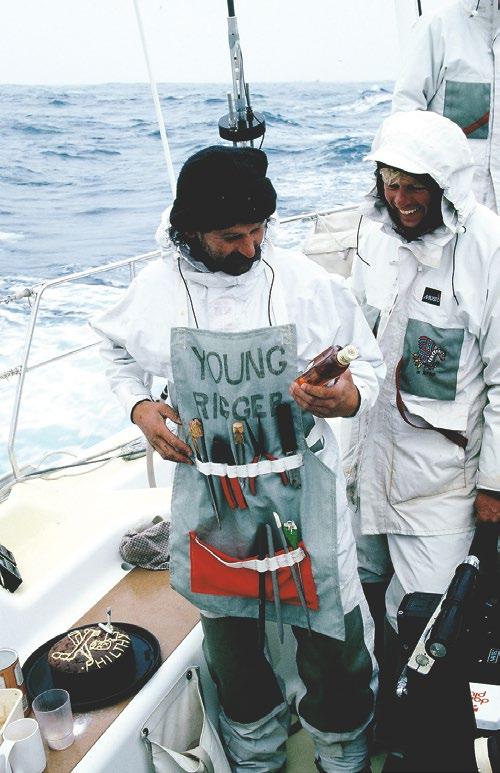

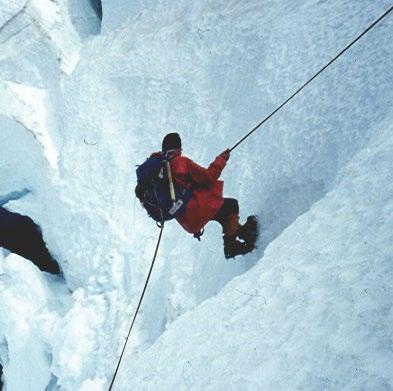

Each of the entries has a sailing crew who race day and night for more than 20 days at a time on some of the legs.
Drum finished a close third on elapsed time in 1985-86. (see QR code bellow for the official video highlights of the race.)
Drum’s Captain, Skip Novak and Phil climbed the 10,000-foot Mount Aspiring while the boat was in New Zealand and planted Drum’s flag at the summit. Just adding to the 10% of terror that is said to go with the 90% of boredom that is the Whitbread!
Phil sailed the Ocean Race twice, the other being on NCB Ireland in 1989-90. A little more on this adventure a little later on.
Phils earlier brush with royalty courtesy his achievement of being award the Duke of Edinburgh Award was augmented when he again visited Buckingham Palace as a member of the crew of Drum. Before the Whitbread race, Lady Dianna wanted to meet Simon Le Bon and Duran Duran so the crew of Drum went to London and were all introduced to her at the palace.
In the official Drum book marking its first Whitbread, co-author Neil Cheston observed this about Phil.
All the Whitbread boats needed a rigger, to take care of the ordering and maintaining of the several kilometres of wire and rope required to sail hard for 27,000 miles. There were several candidates for this post, and Skip decided on ‘Philthy’ Phil Barrett. Philthy was well known as one of the more colourful characters in a milieu that contains very few dull ones. He was
renowned for his blunt, no-nonsense way of speaking, and also for his outlandish appearance. No sculptor could create a human profile with more sheer character than Phil’s. With his hooked nose, revolutionary moustache and blazing eyes, he seemed to have stepped straight off an eighteenth-century pirate ship, an effect heightened by a gold earring and a tangle of jet-black hair. Phil joined the boat from American Maxi, Kialoa IV, and he was fiercely conscientious. Anyone guilty of idleness or incompetence would get a lashing in a thick Hampshire accent from Philthy, and I should know, I was his assistant! We never had any rigging problems for ten months of racing and his raucous sense of humour became one of the trademarks of our boat.
Neil Cheston
I’ve known Phil for some 38 years now and although I’ve not seen much of him lately, he occupies a special place in my mind and in my heart. I first met Phil when we were working on Drum preparing the boat for the Whitbread round the world race.
He was always so kind and friendly and inclusive of everyone, we all had an amazing time and before the race and during the campaign leading up to the race we often went out and had fun together in Southampton with the rest of the crew, or wherever the boat happened to be at the time.
Phil was absolutely brilliant to work with. He immediately spotted that I was good with my hands and put me to work doing leatherwork, rigging and running repairs on just about everything needed.
Phil taught me how to splice rope to wire and splice different kinds of ropes in different ways to make safe and secure rigging for use on board the boats that we worked on. We got along very well and soon became great friends and working colleagues and this friendship lasted for
many years as we worked on different boats together him often as the captain and me as the first mate.
We did many sailing trips together. Transatlantic cruising, around the Caribbean and the Western Isles of Scotland. We also cruised the Mediterranean and had the best times racing large ocean-going maxi boats over long distance ocean racing.
Phil has an enormous amount of experience to share and for any long ocean passage he was always keen to take on a youngster to literally show the ropes. This had an amazing cohesive effect on the more experienced crew and would always galvanise them into showing their best side, teaching the Rookey the correct and best way of doing things.
Once we’d finished the trip and taken the cruising record from Gran Canaria to Antigua for our own. We had a big party and celebration, music, dancing, drinking rum punch and lots of ladies joined in the merry throng. A few days later when we’d sailed down island and the boat was on anchor in the bay. We sat in a beach bar surrounded by coconut palms overlooking the beach and beautiful vista clean shaven and elegantly dressed in our Hawaiian shirts. Phil smiled, “this is it mate; it doesn’t get better than this”. He looked the happiest I’ve ever seen him and you know what he was absolutely right.
Jonny Le Bon
In 1986 Phil took over as skipper on Drum and sailed to the Caribbean.
“I remember one day we were moored in Antigua and Simon (LeBon) said did we mind if he brought some friends aboard. Of course not, because we were soon to be saying hello to David Bowie, Mick Jagger and Jerry Hall.
“We had a great afternoon as I loved all these guys music.”
“He was a nice guy, Simon, he gave me a great opportunity and we (wife Mary) remember how good he was to our young kids”.
“I remember pulling into Mallorca marina on Drum with music playing loudly and the owner of Desperado, Richard Loftus loved it. Phil tells us Loftus ‘owned half of London’. He came out and was rapt to see Simon LeBon’s yacht and it came to pass that I was offered a job on his yacht, Desperado a year later. Richard wanted Phil’s racing expertise and they worked together for years racing and cruising Desperado recalls Mary. Phil was by this time a well-known guy in the yachting community and affectionally known as ‘Philthy Phil’!
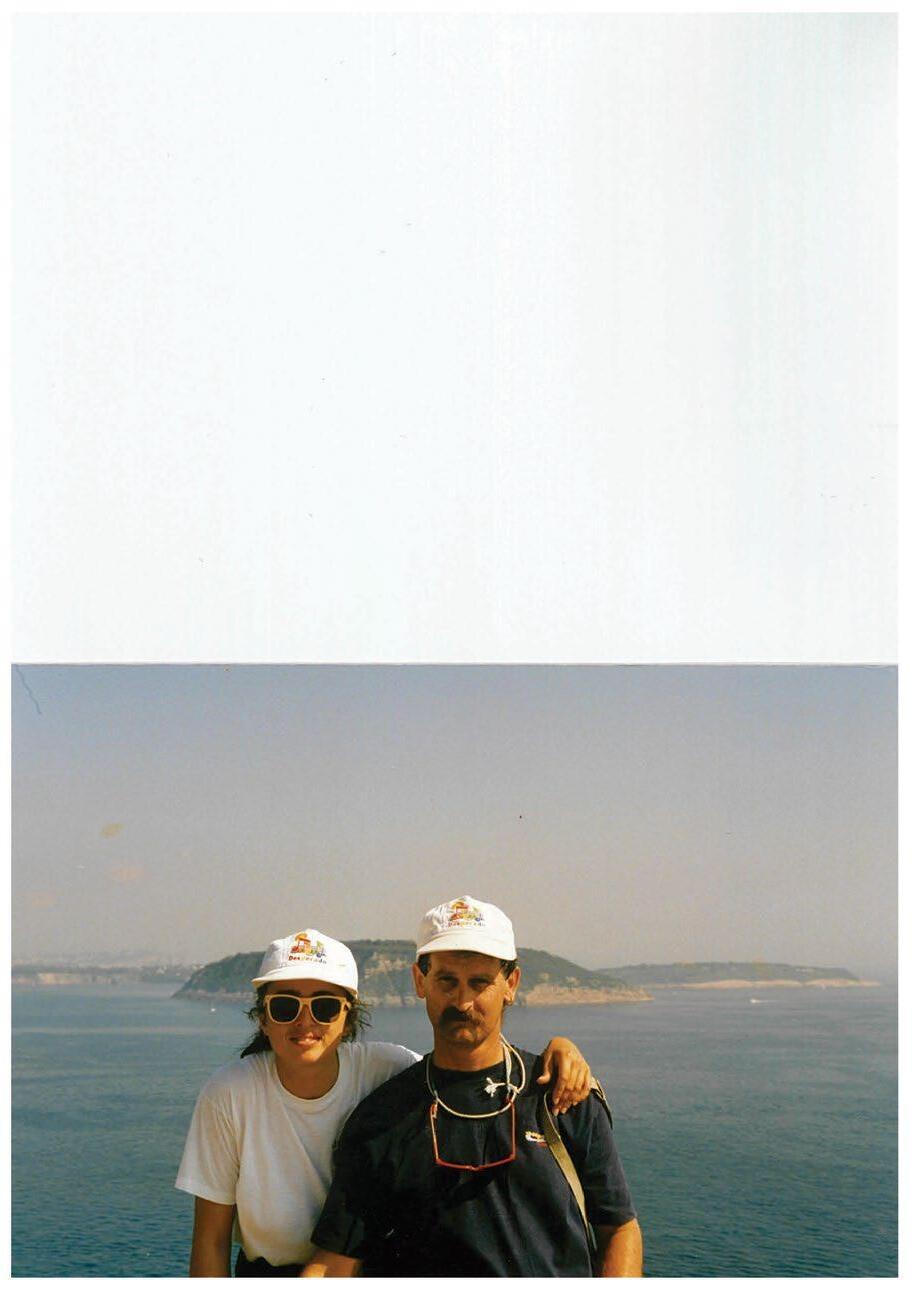
Phil skippered Desperado (a Swan 65, a model considered the Rolls Royce of yachts), for a number of years through 1987 - 90.
“We went all around Scotland and Ireland, from the Mediterranean to the Caribbean and logged over 20,000 nautical miles. It was a 65-foot cruising yacht that could race. In 1989 we raced in the Fastnet, but also in Antigua Race Week, the Swan Regatta in Sardinia, the Scottish series and the Swan Regatta in Guernsey.”
When Phil got on Desperado that was when he and I started our life on boats together, recalls Phil’s wife, Mary.
Phil encouraged me to apply for a job on Desperado so we could be together, and I worked as the boat’s stewardess.
Phil joined the NCB Ireland, a Holland 81 Sloop Maxi, as crew for his second Whitbread Round the World Race in 1989-90. A voyage of epic proportions which legs included Southhampton to Fort Lauderdale, on to Punta, (Uruguay), to Fremantle, (Australia) then Fremantle to Auckland, (New Zealand), Auckland to Punta, Punta to Ft Lauderdale (USA) and on to Southhampton, a trip of 32,159 miles.
“The crews that sail in a race like this are a very special set of people. Not only must they be expert in their specifications, ranging from sailmaking to electronics, rigging to cooking, but they must be good all rounders, highly motivated, physically fit, with nerves of steel and capable of sailing close to the edge for days on end.”
Enda O’Coineen, Sail Ireland
“Ireland’s first entry in the round the world had faced dangers, hardship and mishap with courage, tenacity and skill and to finish twelve overall was a splendid and thrilling performance”,
“The crew’s achievement was on par with Everest ascents and polar expeditions” Enthused Mr Haughey, Prime Minister of Ireland,
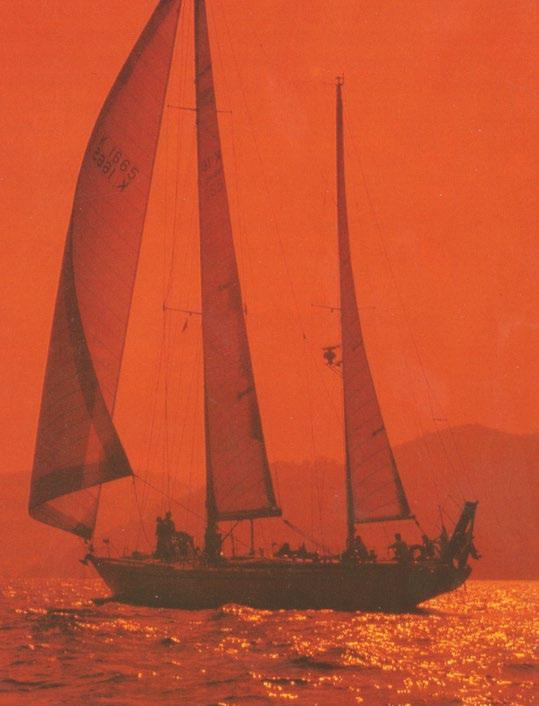
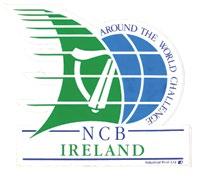
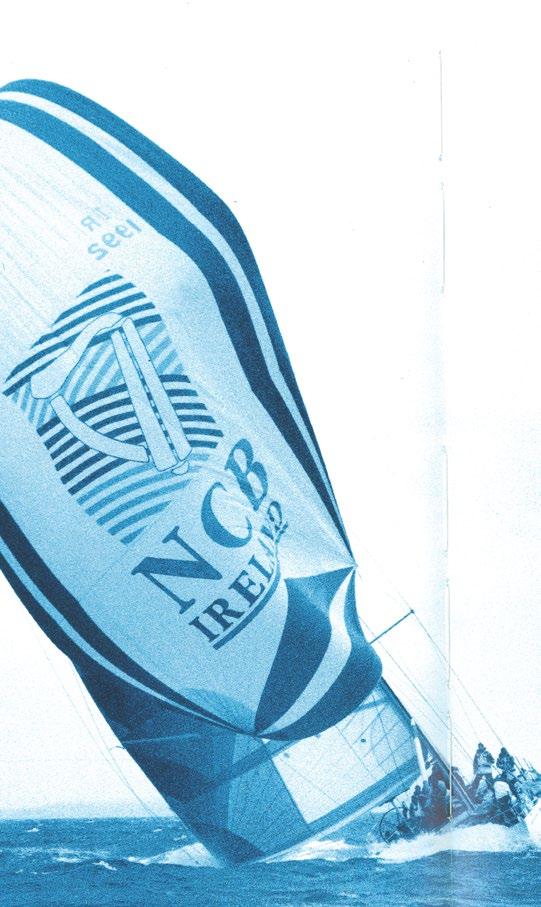
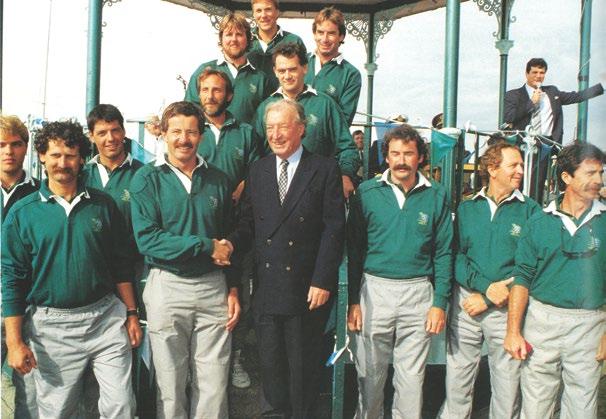
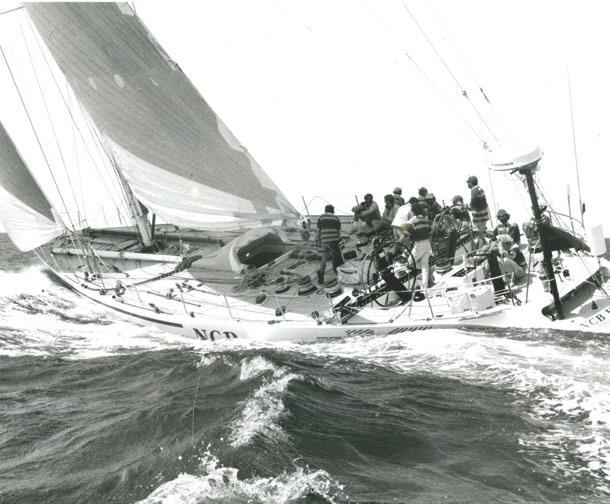

The early 1990’s included more racing and cruising the oceans of the world. In addition to assignments on Rapscallion, A Swan 53 and Mistress Quickly, The Europa round the world on Who Dares Wins, a Swan 53, was a highlight.
The Europa was a cruising boat race. Mostly crews of people would ‘cruise’ around the world together in a more social atmosphere. But the owner of Who Dares Wins wanted to win it, not just cruise, so he’d contacted Phil to skipper because of his expertise.
“I remember the Europa was a very social event with owners and crews meeting up at various exotic ports. But the owner of Who Dares Wins really wanted to come first, so I guess that’s why I got the job!”
Who Dares Wins did in fact finish second overall!
Phil was back in Australia by 1992 after another Swan Regatta in Sardinia on Desprado
In 1994 he was on on Sailbility, a Whitbread 60 in the Sydney to Hobart, as well as a Melbourne- Devonports on Minor Hiccup, a Hick 39 in 2004 & 2005, taking line honours in 2005, as well as other cruising and delivery journeys up and down the east coast. He raced around the Whitsundays and in the Sydney to Mooloolaba in 1997 on Future Shock. He sailed on the Peccadillo, a catamaran skippered by Charles Meredith, including the Melbourne to Apollo Bay, Adelaide - Port Lincoln and the Melbourne –Devonport races from 2014 – 16.
Phil also travelled back to England to crew on Drum in the Fastnet in 2005 and in 2009 and 2011 on Desperado These were great reunions for Phil with old mates.
the reader can view Phil’s impressive sailing and racing records on page 35.
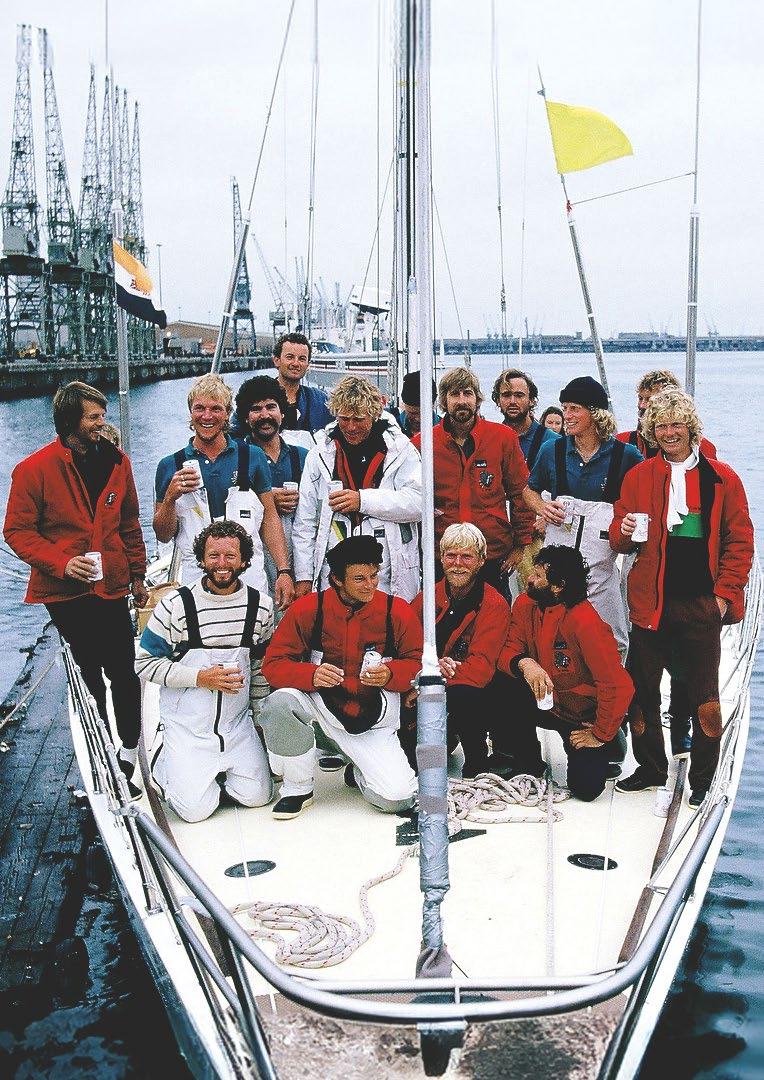
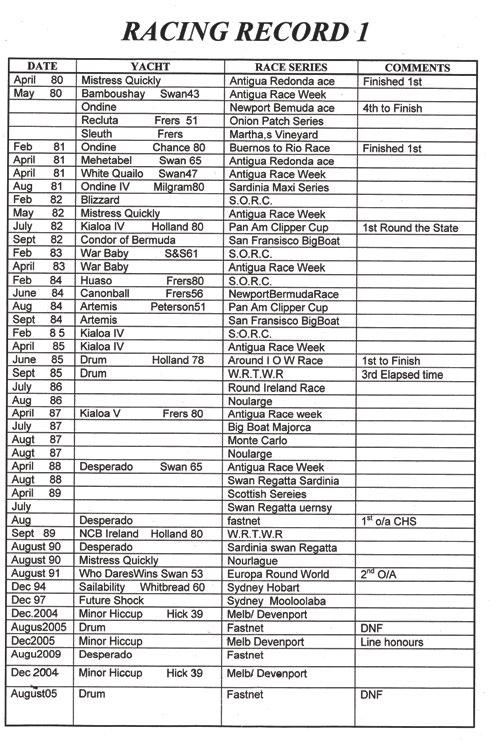
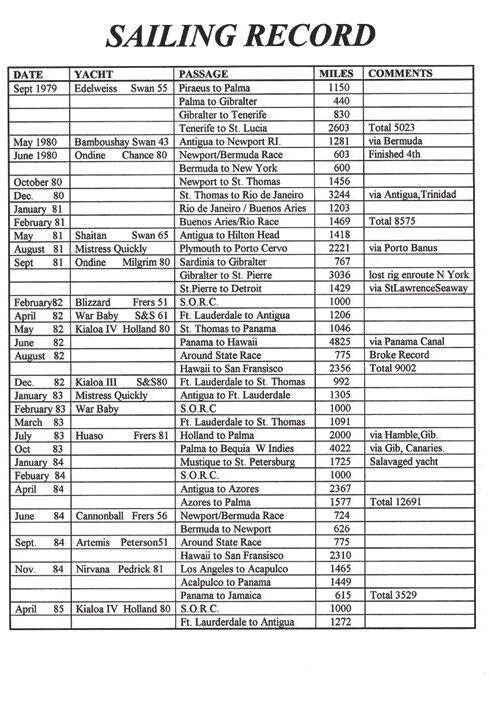
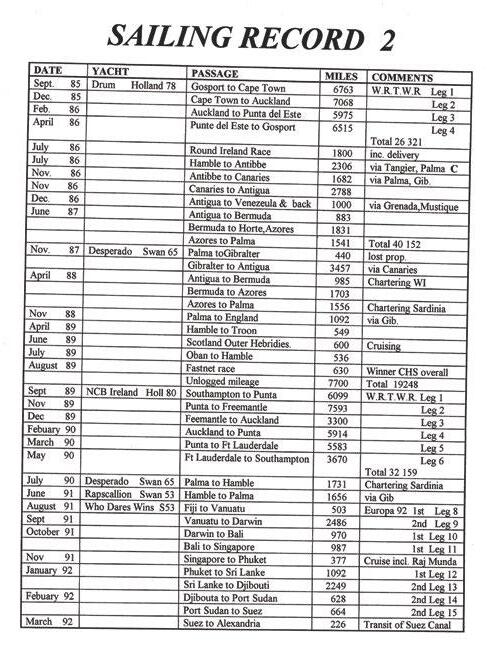


Phil
remembers seeing this great set of legs coming down the gangplank of Mistress Quickly, a yacht moored next to his.
Mary was sailing on a yacht called Mistress Quickly and was bound for Antigua in the Caribbean when she met Phil. Phil was on Drum at the time and the two yachts sailed together down to Antigua via Gibraltar and the Canary Islands.
The attraction developed and Phil and Mary spent the whole season together there.
Romance was interrupted for a while when Phil had to deliver Drum back to England, and Mary sailed on to America. They kept in touch with letters and the odd phone call, making arrangements to meet at various ports of call.
Phil had been offered to skipper Desperado and had been trying to figure out a way he and Mary could be together. A lightbulb flashed and Phil called Mary with his bright idea that Mary join the crew too as the boat’s stewardess. Mary had been considering coming home to Australia, but changed her plans and flew to England to join Desperado instead.
“When Phil joined Desperado, that was when he and I started our life on boats together. He was the one who encouraged me to apply for a job on Desperado so we could be together, so I worked as the boat’s stewardess” recalls Mary.
They worked together on Desperado for about four years, between 1987 and 1990, all the while planning a life together. In the late 1980’s Mary had decided she wanted to return home. Although she had loved her many years sailing to many points of the globe, she had started yearning to settle down.
Phil was offered an opportunity to join NCB Ireland for his second Whitbread to be sailed over 1989 - 90. He knew he had one more long Whitbread race in him so Mary agreed to accompany Phil as partners do on these races, meeting them at various ports and remaining through the postrace publicity engagements. After all this fuss was done and after a holiday in Ireland, Mary returned home in 1991 to plan their wedding, whilst Phil skippered Who Dares Wins in the 1991-92 Europa.
Phil came to Melbourne halfway through the race and got married, stayed for a few weeks and flew back re-join Who Dares Wins and the Europa.
After marrying in Australia and finishing the Europa, Phil and Mary went back to England again while Phil skippered Desperado and they cruised around the world for a few years.
Mary recalls, “We went back to Desperado for a while, as the owner Richard Loftus was keen for Phil to continue to skipper his boat. We did some cruising during 1992 and 1993. But I’d had enough, so I came home again. Phil had decided to emigrate too. The years in the yachting world gave us experiences and lives that others could only dream of. We are forever grateful.”
By the time Mary returned home, she’d been gone for 13 years. Mary was expecting their first child and had come back expecting the land and times that used to exist to be the same, but things had moved on. Phil soon joined her and they settled in Reservoir, a northern suburb of Melbourne. Phil still had good yachting connections and as well as sailing assignments in Australia, those contacts gave him the opportunity to go into business doing rigging and building masts. And so, their family life began.
Mary shares her memories of meeting, sailing, marrying and parenting with Phil.
I first met Phil in 1986 in Palma Majorca when I was the cook on Mistress Quickly and he was the skipper on Drum (post Drum Whitbread). Both boats were getting ready to cross the Atlantic and go to Antigua in the Caribbean. George, who was the skipper on Mistress, and Phil were good friends and had decided their respective yachts would leave at the same time. Phil had come to Mistress to see George and this was our first encounter. I was immediately struck by his physical appearance as he was not your average looking yachty. Long curly hair, bushy moustache, large gold earring, red sunglasses, hippy pants, thin long scarf around his neck and an extremely colourful shirt. More pirate than yachty. I soon realized that this physical appearance was not a fashion phase he was going through, but rather a physical expression of his nonconforming and fearless zest for life that would stay with him to this day. No-one has more Hawaiian shirts than Phil.
During our stopover in the Canary Islands two things had become obvious to me. The first was that Phil had taken a fancy to me and the second that he is very much a romantic. Both boats arrived in the Canaries around the same time, and we were all glad to hit land, find a bar and have some dinner. During dinner, wine flowed, and music played. I decided I really wanted to dance. The fact that there was no dance floor, and this was just a restaurant didn’t really matter as far as I was concerned. Noone was willing to get up, so I felt a bit disappointed. Phil sensed this and said, “come on let’s dance”. He didn’t mind how he looked or what others thought as long as I was having a good time. I was quite taken by his gallantry. I was to be on the receiving end of many a gallant or romantic gesture from him over the years that followed.
Phil was the most wonderful playmate to the children when they were small. Never too tired to play and always ready with a good imagination. He would play dolls with Katie or wrestle with Michael. He would make a cubby out of the branches he just cut off the tree so they could crawl into it or create leaf piles to jump in when raking up the Autumn leaves in the front yard.
He built numerous things for them to play in. He built a massive sandpit for them, a cubby house and fort with a slide, as well as a long climbing rope and a tire swing hanging from a tree. When Michael was older, they built a quarter pipe skate ramp together. It was a massive achievement. A fond memory I have is of taking the kids camping to Philip Island and at night when we were all snuggled up together in our sleeping bags, Phil reading Harry Potter to the kids by flashlight. No longer children but successful adults living their lives with compassion and empathy, he doesn’t shy away from telling them how much he loves them and how proud he is of them.

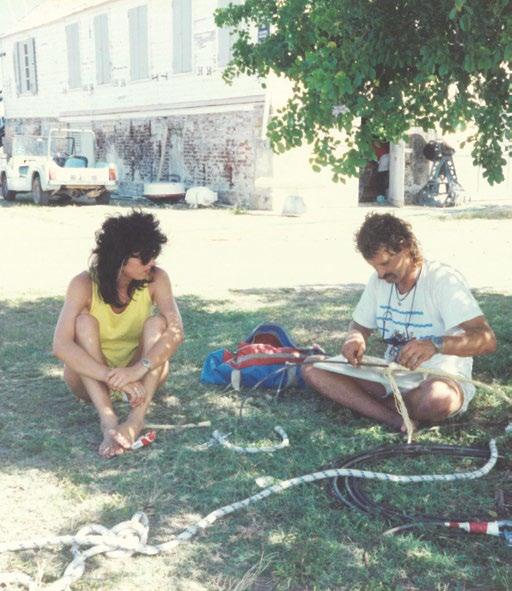
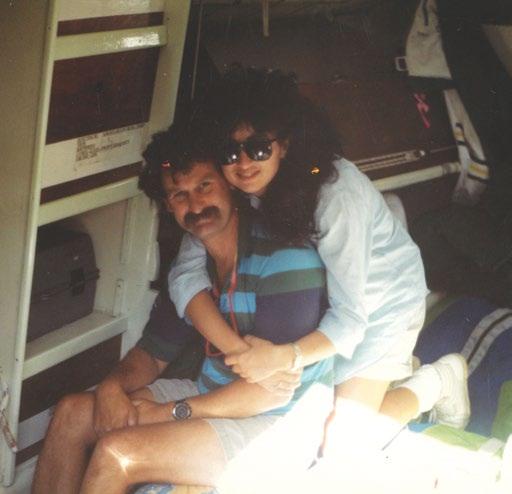
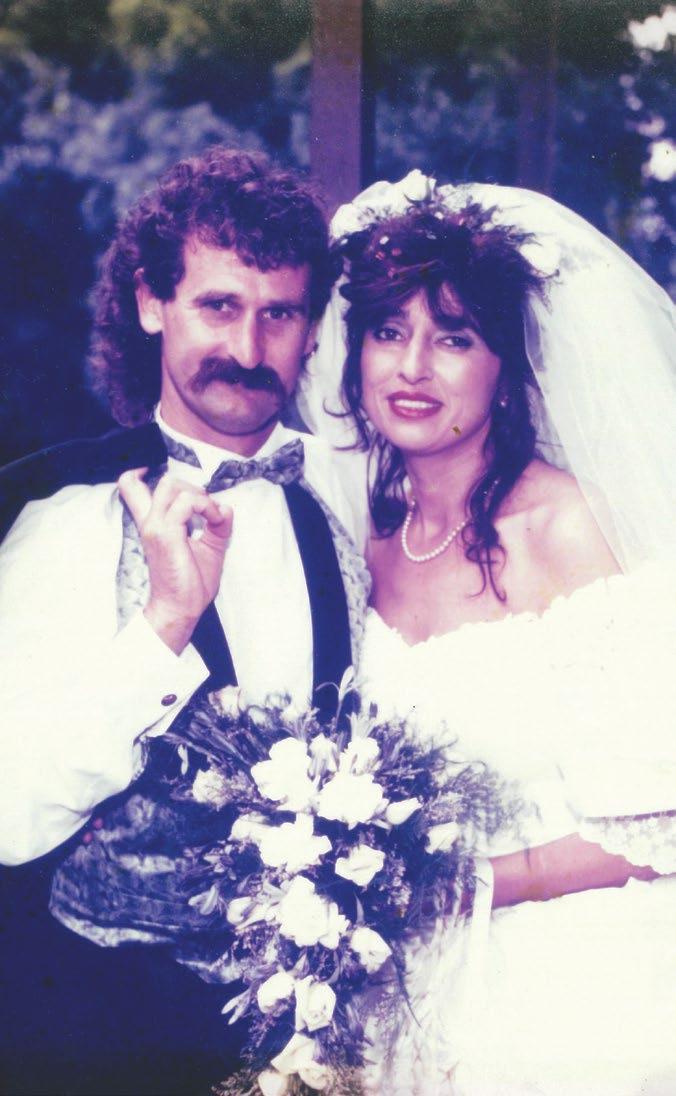
Phil and I have had some amazing life experiences and adventures together. We have travelled a good part of the world, seen some extraordinary places and things and have met wonderful people who have become lifelong friends. Phil is a man who has never been afraid to try something new regardless of how daunting it may feel. Moving to Australia to make a life together was definitely a brave leap. He worked hard and built a thriving business and was therefore able to provide his family with a very comfortable life, never wanting for anything. He is a pragmatic, charismatic and loving man who is always up for a good laugh, still loves his colourful shirts and doesn’t mind making an arse of himself. The latter is what I love most about Phil.
Phil was diagnosed with Early Onset Alzheimer’s when he was 62 years old. This illness impacts your life in so many other ways than just memory issues. For Phil, it has made performing basic daily tasks like dressing himself very difficult. It also impacts his ability to notice certain obvious things unless they are pointed out to him. One of many examples of Phil’s resilience, positive attitude and ability to laugh at himself under such adversity as Alzheimer’s was evident to me when I received a photo of him from the carer who was taking him out that morning. She phoned me and said look at the photo. I took one look and burst into laughter. Phil had dressed himself on this day and had come out of the bedroom ready to go. She asked him if he had forgotten anything. He didn’t know what she was talking about. Phil had everything on except his pants. When I pointed this out to him over the phone, no one laughed harder than Phil at the absurdity of this illness. He got his pants on and went on his merry way. I love his positive and pragmatic attitude and how easily he laughs at himself and his situation. When the going gets tough, the tough get going. That’s Phil.
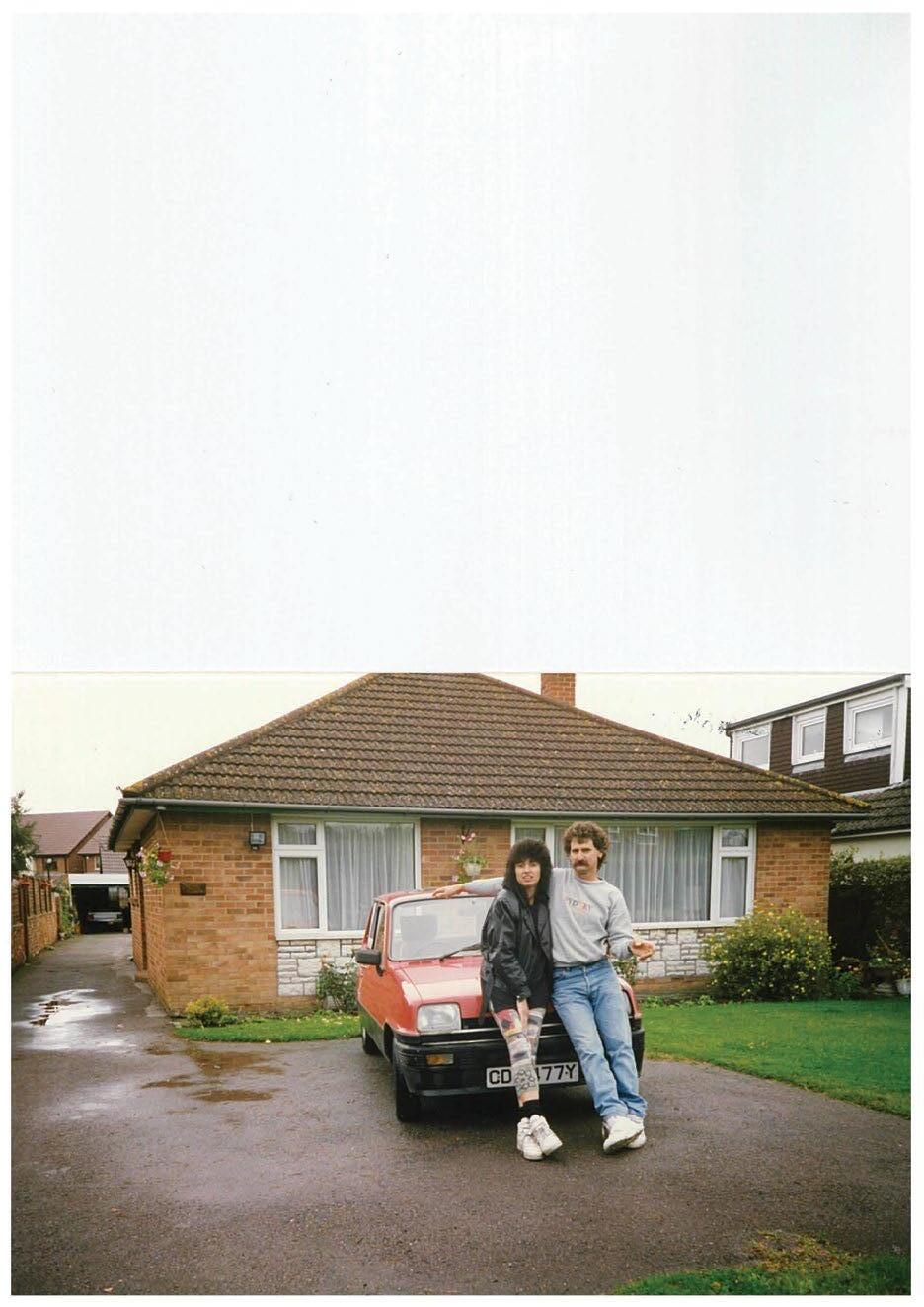
Of course, like all families, over the years
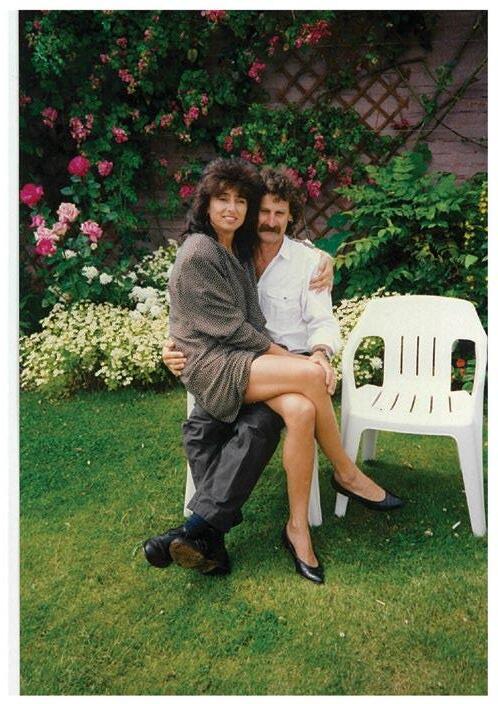
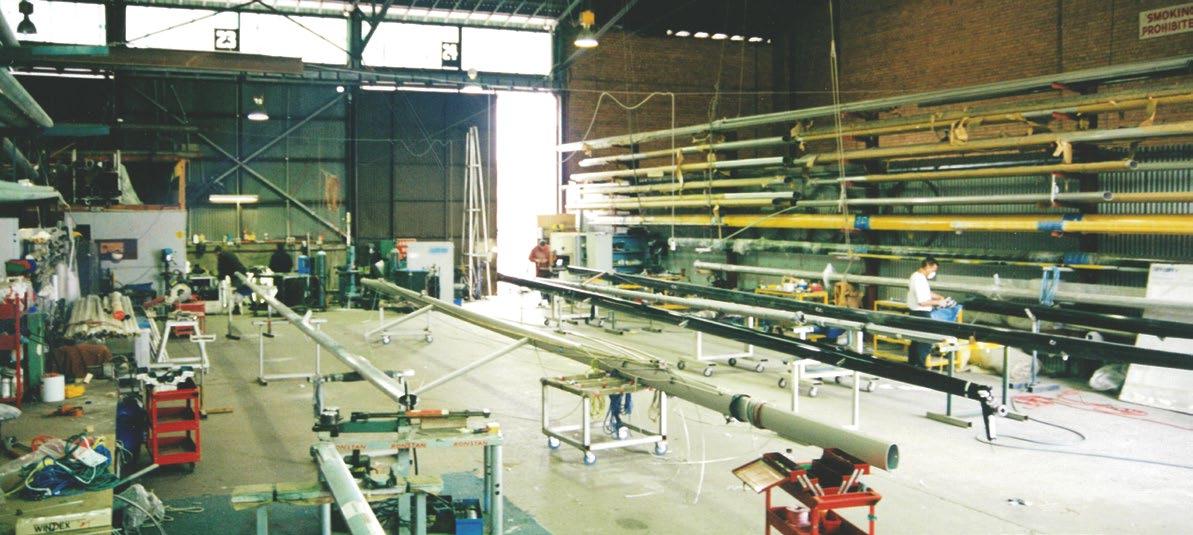
When Phil settled in Melbourne he thought ‘what the hell am I going to do now?’. Yachting was in his blood so coming to Australia was tough for Phil. Having spent the greater part of his life on yachts and on the sea, it was quite a change finding himself in suburbia in a new country.
In 1994, through yachting contacts, Phil got a job with La Mar Spars and Rigging in the old Docklands area of Melbourne, working for Rudi Haiting.
“I went into this place on the wharf in the Docklands and handed in my resume. As I’d been a rigger on a lot of boats Rudi gave me a job straight away. I took a guy called Ian Walker’s job who had left to go off to sail a round-the-world race. So, my timing was good too!”
Phil ended up becoming partners with Rudi in 1997.
“After a few years, Rudi left the business and I took it on in 2000. After a while we renamed the business OzSpar and moved to bigger premises at Shed 30 in the Docklands. Ozspar made masts and rigging for yachts as well as industrial balustrading and other fabrication.”
OzSpar specialised in the fabrication and service of Aluminium masts for yachts 25’ to 60’ including complete rigging facilities and a selection of custom designed mast sections.
Mary describes OzSpar as a high-pressure business and not one that could co-exist with the onset of Alzheimer’s Disease. The early stages of Alzheimer’s had, unknown to everyone, began to have an influence on Phil’s day-to-day life. One of the key issues Phil had was with the accuracy of his calculations and measurements. He was gradually loosing this ability. Even small errors were amplified as being a business focused on safety, accuracy was critical. Reparations had to be made, costs rose and significantly contributed to the business’ eventual closure.
OzSpar was a highly respected and successful business up until closing in 2015.
There are two other people integral to Phil’s story, his two children. Who better to write this segment than Katie and Michael themselves.
Not many people get to grow up with a Dad as cool as mine. A Dad who would tell me stories as though they were out of a fictional novel and then end it with the fun fact that he was actually the real-life lead character. A Dad who constantly taught me to reach for more, to never be satisfied with the mediocre or the dull, and to always seek the adventure and love that I deserved.
As cool as he is, sometimes we wouldn’t see him as much as we wanted. He would be gone for a week to quickly race down to Tasmania and back, a few days to drive up to QLD for a mast delivery or would be off to work before I woke up and back home after I was in bed. But he did these things for us. He maintained his place in the Australian yachting community so that he never lost his spark as our Dad, and he maintained a successful business that allowed me to have everything that I wanted and needed growing up.
When I say everything, I mean everything. Mum and Dad would take Michael and I on holidays every year. We’d go to the snow regularly, the theme parks in QLD, The Whitsundays to scuba dive The Great Barrier Reef, England to visit family, Bali for fun, China to see the Terracotta Warriors, Sydney for the NRL Grand Final, Hawaii for the sunshine, all the way down the Great Ocean Road and Mornington Peninsula constantly, and down to our caravan in Dromana for weeks on end.
We did all the sports, played all the musical instruments and participated in all the extracurricular activities we could ask for.
All these experiences and opportunities were wonderful, but they pale in significance compared to the time we all spent together doing the most mundane things.
When we were young, Dad would make us whatever we wanted. I wanted a cubby house, so I got a greenhouse filled with knick knacks. I told him I wanted a sandpit and a swing, so I watched him while I giggled and he dug the hole, built the frame, filled it with sand and fashioned a swing out of some rope and a tyre. Then we wanted a slide, so he built a green fort to match the cubby house with a big green slide.
As we got older, our wants were more extravagant. We wanted a pool, so mum and Dad put in a pool and Dad built the decking. The install of the pool was delayed so we ended up with a deckless pool for one summer before Dad got stuck into finishing it. He thought it was a good idea to pull the trampoline up to the edge of the un-secured pool, and we flipped into the water from as high as we could jump. Looking back, I’m surprised there weren’t any serious injuries.
When Dad’s factory was in the old sheds in Docklands, we would go there for the day during holidays and he would string up the giant swing he made to the roof of the factory and swing us from one end to the other, overlooking the water. We’d jump on the Trikes and whizz up and down the factories before going to subway where we played “The Game”. If you haven’t been to Subway then you won’t understand this, but it’s basically a game where you get your whole order in, without them asking you any questions. Sounds simple, but there’s an art to delivering each piece of your order before they can ask for it, but not too quickly or they’ll forget what you said and ask you to repeat something. Dad and I played “The Game” for years, every time I went to work with him in Docklands and then in Altona. I still laugh thinking about
the funny middle-aged man and his overly confident daughter, laughing hysterically while ordering sandwiches.
Dad would make fun out of nothing. I remember one hot summers day and Michael and I were complaining we were hot and bored, so Dad went into the Mary Poppins style (never ending and full of everything) garage and came back with some sort of contraption. “We used to use this on the boats” he said to a couple of puzzled pre-teens, before explaining that it was a 3-man slingshot. One person to hold each side and the third person to fill the pouch with a water balloon, walk it all the way back and then let it fly. We shot water balloons down our street and from our backyard all over the neighbourhood for ages, laughing at the thought of all the confused faces in Reservoir as water balloons landed out of nowhere.
I’m lucky to have been able to share the NRL with Dad. Dad took us to our first game when we were quite young and to say I fell in love is an understatement. People think I’m odd when I say I follow the NRL and not the AFL living in Melbourne, but Dad conditioned me out of this AFL rubbish as a child, and I can’t thank him enough. All those cold nights rugged up in thermals at Olympic Park are some of my favourite nights. I’d tell Dad I want to be a cheerleader and each season have a different player I wanted to marry. Dad would just laugh and then we’d chat stats. I became his little statistician, telling him all about the new players, where they came from and what we should watch for. It’s probably one of the things that I noticed first with his Alzheimer’s, he needed me to tell him more and more about who was out there on the field. I’ve never minded though; I love talking to him about the rugby.
As I’ve gotten older, the way Dad’s spirit impacts my life has changed. These days I use it as a guide for my own life, and I know I’ve done something right when he tells me he’s proud. He’s always been so proud of
his family and his children and has always told me how proud he is of his favourite (only) daughter. Every time I do something that challenges my own boundaries, be it moving interstate or overseas, progressing in my career, renovating a home, or just doing something to make myself happy, he will always tell me how lucky he is and how proud he is. I’ve never doubted it either. I may be his only daughter, but he makes me believe that I’d be his favourite even if he had 10. He calls me his little ray of sunshine and tells me the story about how he was driving to the hospital when I was born and the Axiom song came on the radio. I’ve never felt anything other than loved, growing up a Barrett.
It hasn’t all been peachy though. Dad’s Alzheimer’s diagnosis and the subsequent years have been so hard on him, but they’ve also been hard on us in a different way. The struggle of seeing your hero, the most wonderful spirit you’ve ever known, slowly lose his way, is truly more heartbreaking than I ever thought it would be. The sadness that I feel thinking about all the things that we will miss is something that I often have to supress. But then I think of all the things that has taught me about living in the moment and I remember to be grateful for yesterday, today, and all the days to come.
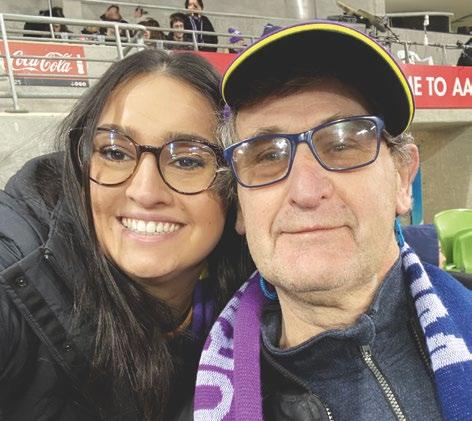
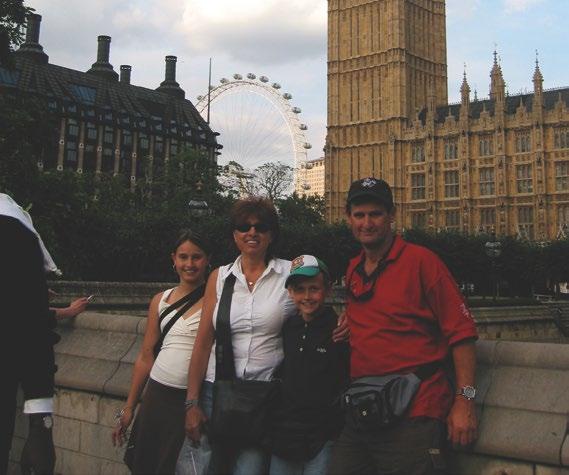
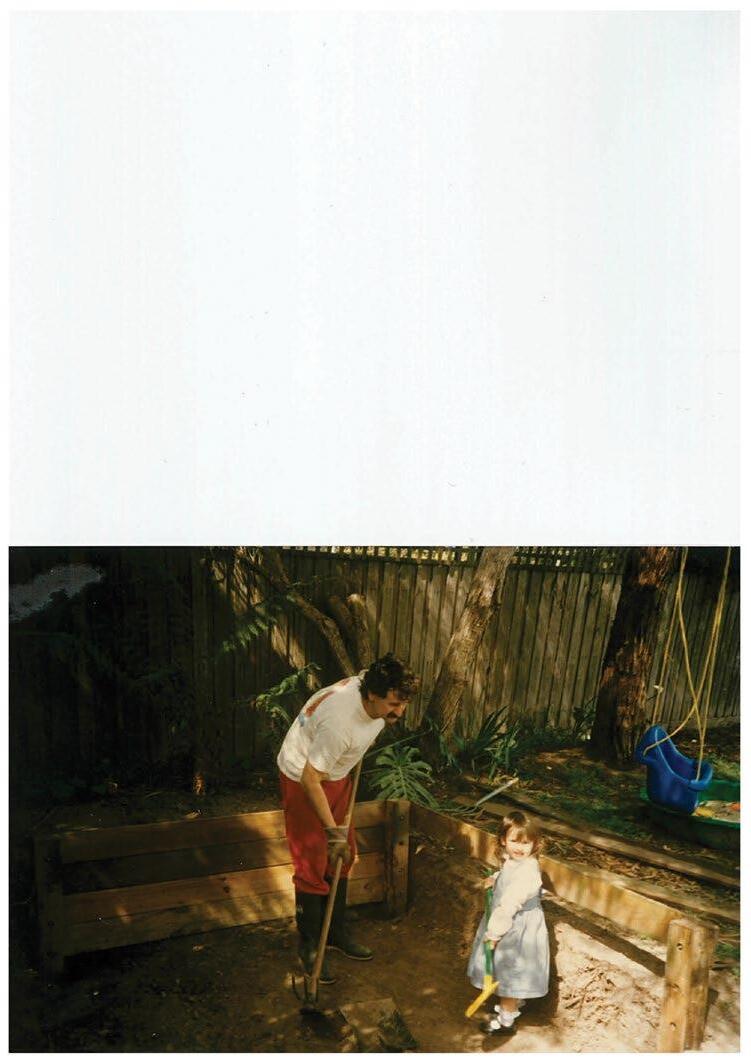
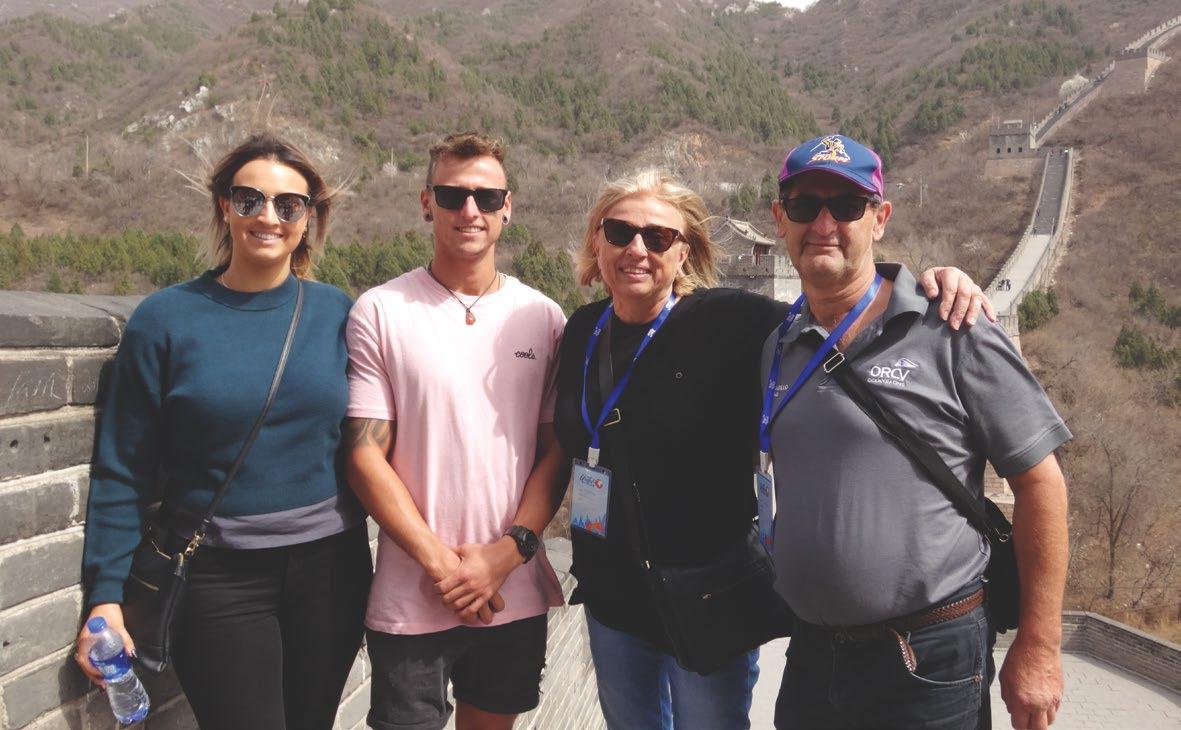

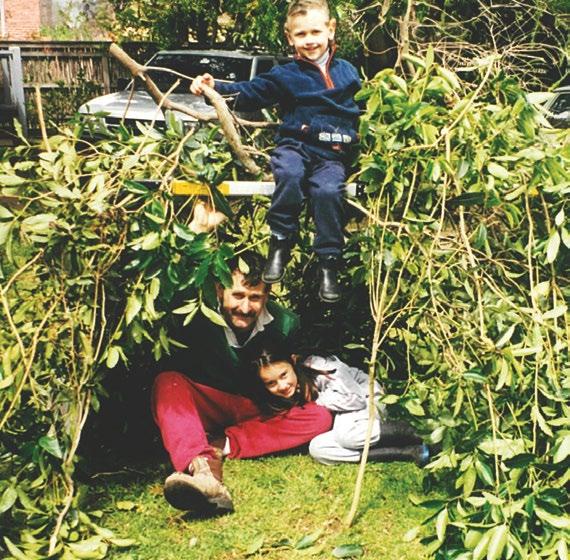
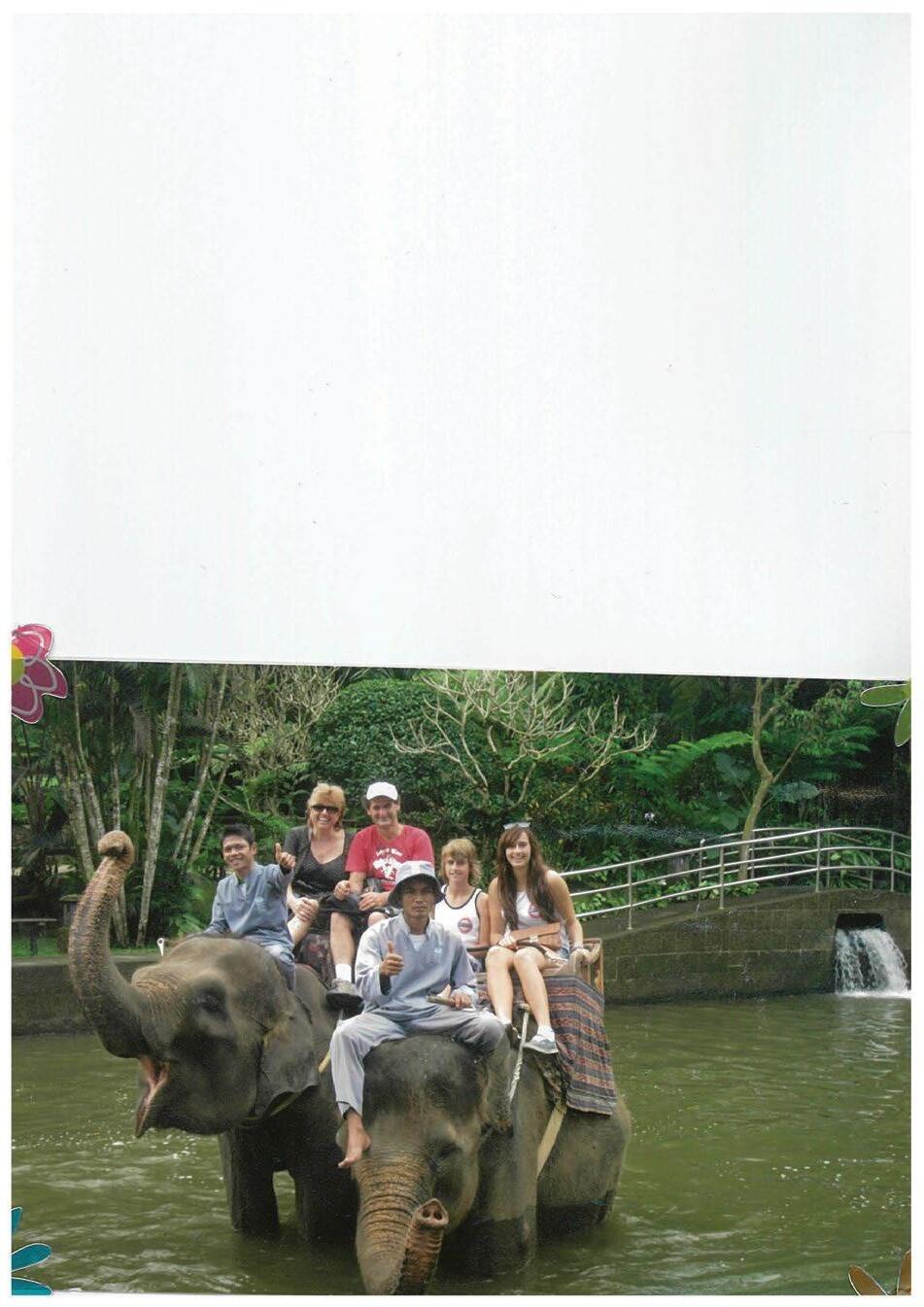

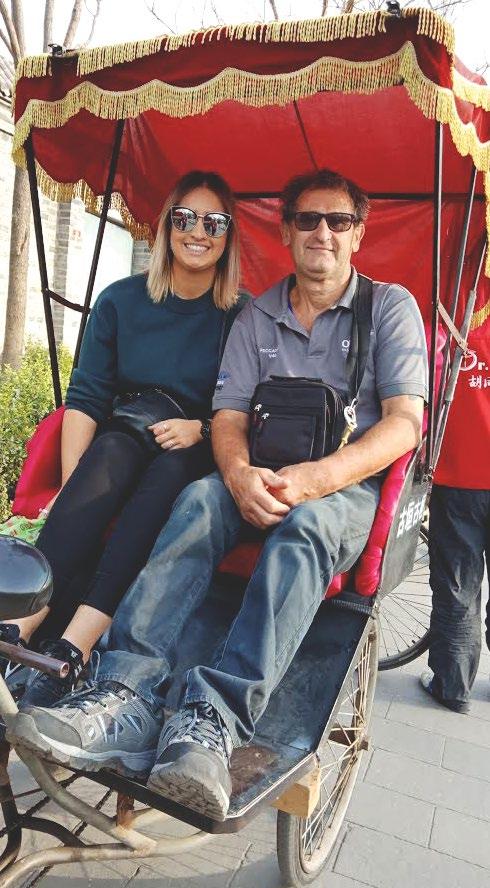
Growing up with my Dad has been great. From the earlier memories I have of us building cubby houses and playing rugby in the backyard, to working with him in his factory as a teenager and then all the times I have shared with him as an adult whilst he has been living in Rye. It’s hard to describe how I feel into such a short number of words, but one thing is for sure, if you ask any of my friends, they will tell you I have consistently described my Dad as one of the coolest people I know. My Dad was always involved with us as kids.
He would work all day while my mum looked after us but would always have the energy to play with me and my sister when he got home. He built countless things for us in the backyard, and I have vivid memories of kicking the ball around with him as a kid. My Dad would take me into work with him as a small child and a young teenager, take me out on boats and teach me little things.
I don’t have a lot of memories as a young child but when I think of my Dad from back then, I remember him as a sailor, going out on yacht races and even getting me and my sister to do sailing lessons as children. One core memory I have that always makes me smile is driving in his Holden Rodeo with my sister and jamming out with him to “Jump” by Van Halen. As a teenager my memories are somewhat vague as like any teenagers, this is usually the time that you don’t want to hang around your parents. Both of my parents were great as I was growing up. I was a troublesome child to say the least, but when I look back now as an adult I can understand and respect the way they parented me more. They both gave me the free reign I needed to develop into my own person without letting me slip too far down a hole. Perfect example of my Dad like this was when I got arrested for the first time at
13 years old. I got the cops to call my Dad as I knew he would be more chill than my mum. The cops threw me in the cells over a tiny offence and at that age I thought I was going to end up in jail. I later found out a few years later it was my Dad that told them to throw me in the cells to teach me a lesson. Then when picking me up we just had a laugh about it and moved on.
My Dad was always the one who didn’t have much to say. A typical “ask your Mum” Dad. I think this all stems from the fact that both my parents have always been free spirits and it’s something I admire about them greatly. Like any family, we had problems, but I wouldn’t change any of it. How we have come together to support each other and my Dad after many years of poor relationships is admirable and showcases the spirit of family. Dad has always been somewhat of a wild man. One of the best things is the stories I’ve heard as I got older about him in his younger days. These stories definitely support his case as a wild and crazy man. Even on family holidays he was still a troublemaker. Getting a tattoo in Hawaii that I chose (convinced he did this to make me think he was cool) and then almost getting kicked out of the tank when swimming with sharks because he would not listen to the guides about leaving his legs hanging out the cage.
The memories I have with my Dad I will cherish forever, but a better way to describe how I feel about my Dad is to explain the impact and influence he has had on my life. Both of my parents, but especially my Dad, have had a far greater impact on my outlook on life than they think. It is deep seeded within me and is realised through self-reflection.
I would die a happy man if I could live a life just half as exciting as my Dad. Michael
He has random stories that he will pull out of nowhere that would be an average person’s number one story they tell people. He lived life the way it is supposed to be lived. Full of adventure and excitement.
Always willing to try new things and dive headfirst into the unknown. From his travels, his sailing and even the fact he settled in a foreign country away from his family. These are all things most people aspire to do but are always too scared to do and they then end up living some mundane life without ever venturing out. My mum is the same, the way she went against the norm and left the family home to travel the world which was unheard of for a young Macedonian girl. I want to be like my Dad in that regard, I have a burning sensation inside me to dream big and embrace the adventure that life can be.
This sits deep inside me and would be in my DNA. Even in my Dad’s old age, he is the coolest old man with Alzheimer’s there ever was. Most people in his situation would be sitting at home like a potato. He to this day is still out there walking around, talking to anyone that will look at him, going on his own little adventures and exploring the Peninsula.
He was definitely a ladies’ man back in the day because even in his senile state he still has half the women in Rye loving him. It sometimes saddens me that I didn’t get much time as an adult to have a relationship with him before his disease. I am grateful for all the time we have spent together, which has been more than most young people spend with their parents at this age.
My Dad is wiser than I give him credit for and provides simple, yet valuable advice. He is always proud of my achievements, and I know he thinks highly of me.
His advice to me is to always be willing to give things a go, to put my hand up and take opportunity no matter what it might be, do my best and I’ll be surprised where I end up.
I love and admire my Dad so much. I hope to live a life that he would be jealous of, full of travels and crazy stories like his. He has lived life the way it was meant to be lived. A wild hippie travelling the world and experiencing all of its cultures, a successful business owner and settled down with a beautiful family.
Not many people can say that. I love you, Dad.
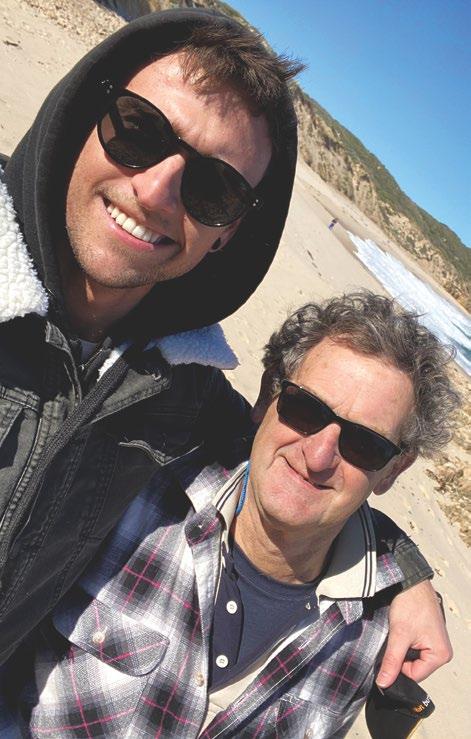
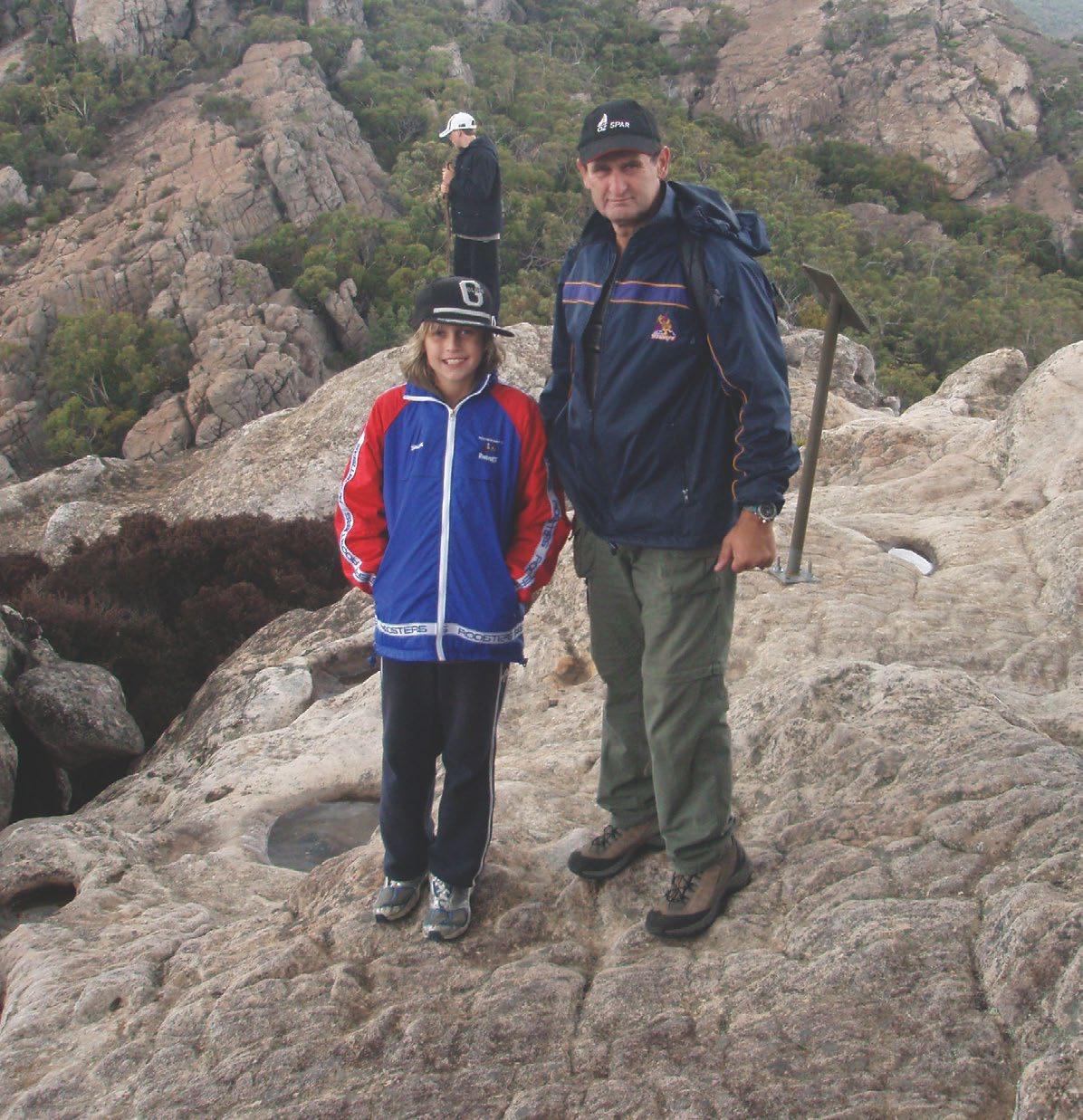
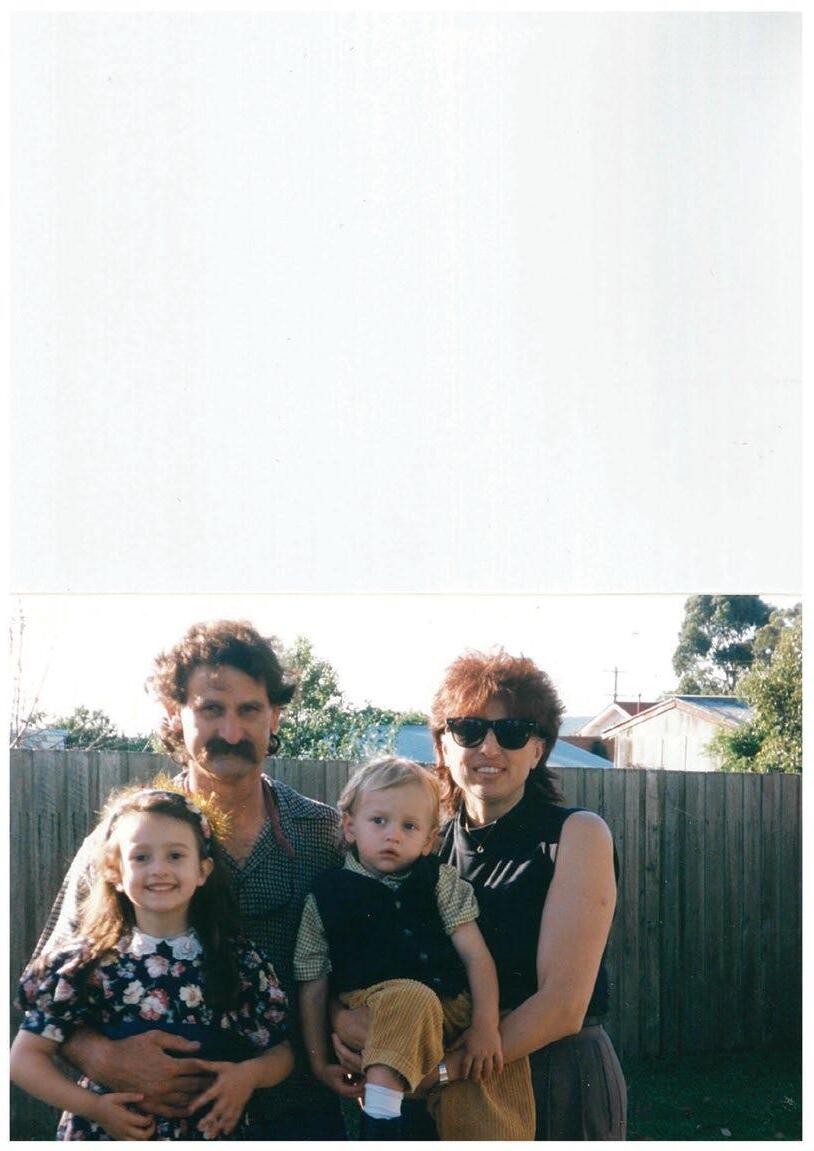
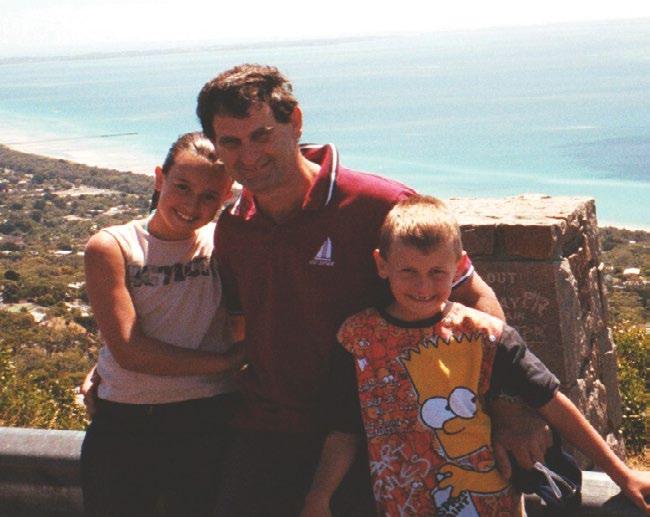
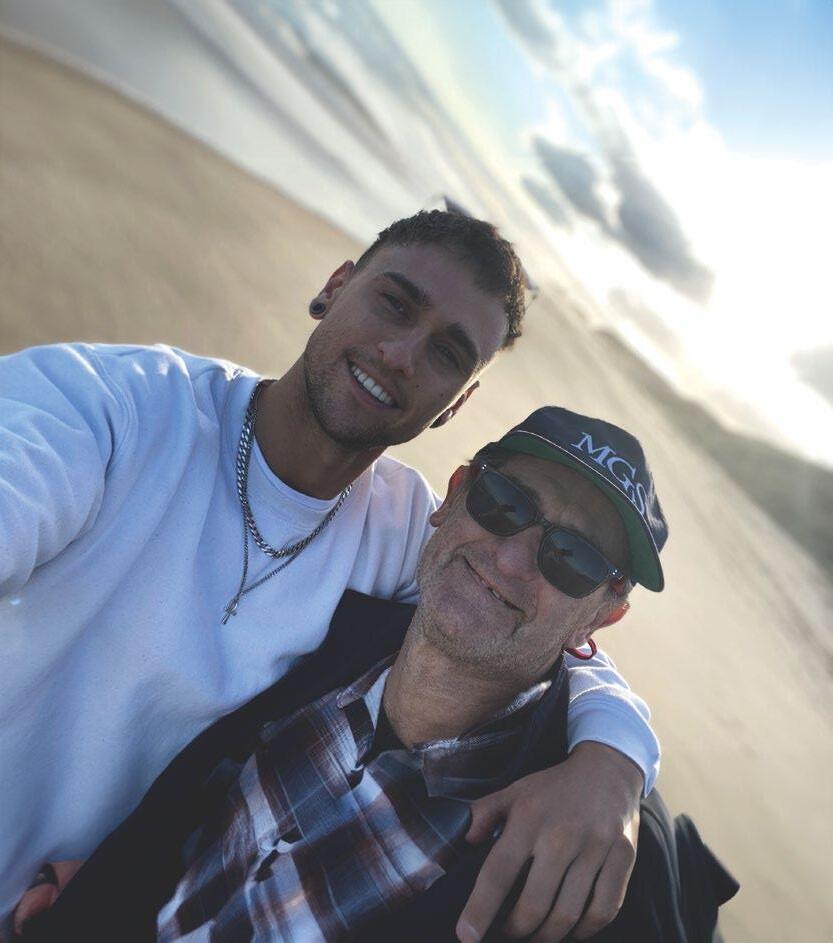
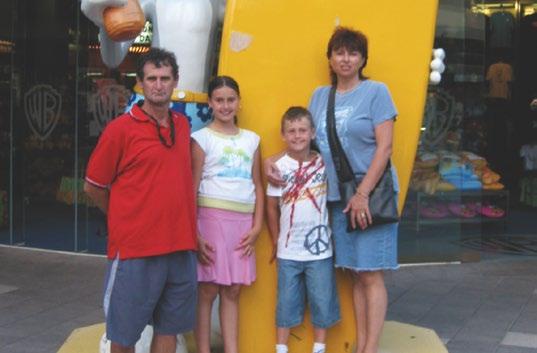
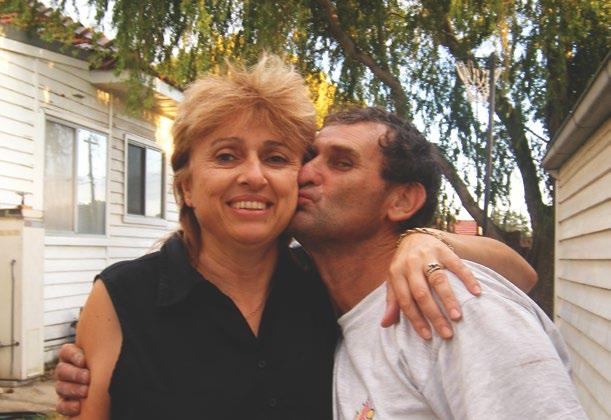
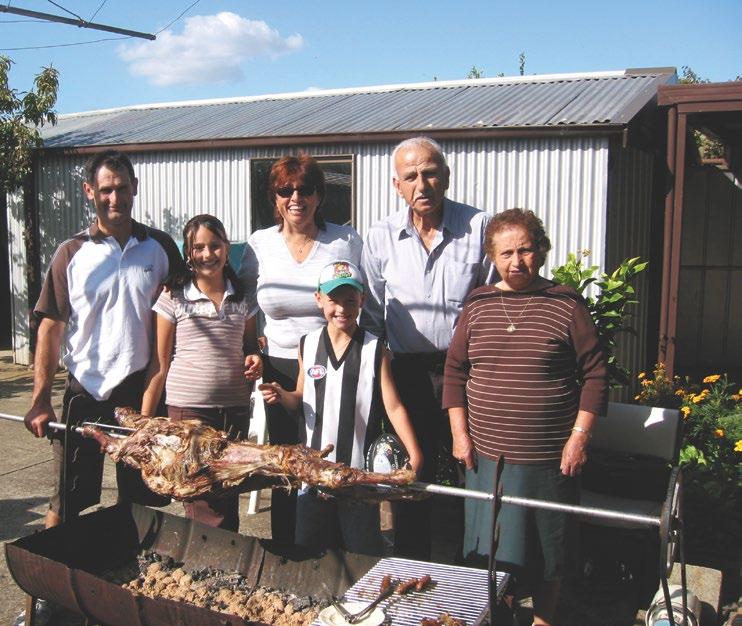

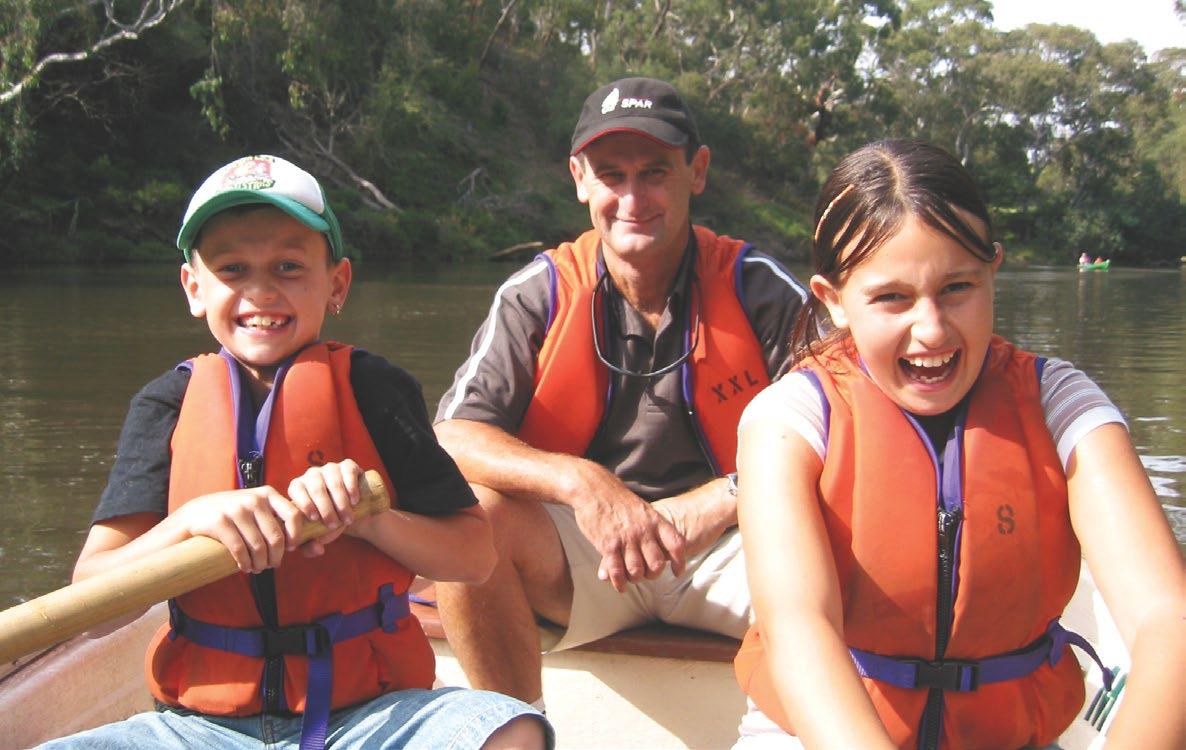
For all sufferers of Alzheimer’s, life can sometimes change suddenly and sometimes gradually. In Phil’s case, behavioural changes emerged gradually according to him and his family. Being a neurological disorder, it primarily affects the brain’s cognitive functions, particularly memory, thinking, and behaviour as well as organ functions.
“I found myself becoming aggro. There was a lot of volatility and people observed my personality changing. The family had thought it was a stress thing related to the business. They thought I was having a mental breakdown.”
It was suspected that Phil had been suffering from the disease for up to two years prior to formal diagnosis. Before his situation was finally revealed to him and his family, he had been seeing doctors and specialists, as he knew something was wrong.
The official diagnosis answered many questions for the family and was somewhat of a relief. Phil’s spatial awareness had been gradually affected, so he was forced to give up things he has liked doing.
“I was determined to keep doing whatever I could. I used to ride from my house in Rye, and end up in Frankston, 40 k’s away, so I was pretty active even though I had stopped sailing. But my bike riding mate noticed a few things and told me I should give the bike away, so I took his advice”.
”It has been very frustrating. It stole my business and my dream of sailing to Antarctica. I had been invited to crew on a boat going to Antarctica to trace the steps of Shackleton’s expedition. That would have put a bow on my sailing career! But fundamentally, it has had a significant impact on my family.
It changed me to a point that my marriage broke up. I was too hard to live with!”
Phil has always been pragmatic and one not to give up, but many things have become difficult for him. Technology has become a problem. Navigating a remote control for example is near impossible. But Phil has tried to put aids in place and set small goals with the help of his family.
The
ubiquitous word in our conversations about Alzheimer’s is
Mary explains “Sometimes when I talk to Phil on the phone (and this is at least three times a day) Phil says strange things about his surroundings at times. The interior of his house he sometimes thinks is the inside of a boat. He gets up and starts his day in the middle of the night saying a storm is coming. We have excellent care arrangements for Phil, but the times he spends alone are becoming more of a challenge as time goes by.”
Phil adds, “A couple of times I’ve found myself on the floor wondering where I am. I have distorted visuals and hallucinations.”



As a result, a more comprehensive approach to care has been put in place.
There’s a lot of support involved in Phil being able to stay at home and live independently. Phil has morning support to get his day started, evening support to help him with dinner and getting ready for bed, cleaners, and carers who takes him out. He attends the Umbrella dementia Café fortnightly which is a wonderful support for him.
Each weekend, his wife or one of his two children come down to stay with him.
Phil loves his daily caregiver, and she has an incredible relationship with him. The support of Phil’s friends, neighbours and the local cafe have also been a godsend. There are so many people that keep an eye out for Phil in Rye, the family jokes that Phil has a harem of women looking after him!
His dog Charlie was his constant companion and has also been a huge factor in his ability to live at home alone. Without Charlie, Phil would not be as well as he is. He is the best friend and roommate that Phil could have and will follow him around everywhere. Charlie won’t even let somebody else walk him on the lead, instead, pressing his tiny little legs into the ground to pump the breaks, as he won’t walk anywhere without his mate.
“Phil and I met at our local yoga class around 2016 and we found that we had much in common. His open and welcoming personality made it easy for me to become good friends and we often met for cycling to Point Nepean and coffee at Indulge Cafe where he was a regular.
I consider him my mentor when it comes to sailing and his stories always fascinated me. In the early stages of his disability, we would sail on the bay in summer.
His dog Charlie was his constant companion and he joined us in many adventures.
We often attended the local church functions and table tennis with the senior citizens at Tootgarook. They often ask how Phil is doing.
Sadly, for me, I saw Phil’s disease slowly diminish our activities. We could no longer ride together. Not even for short trips. His coordination and balance made sailing evermore risky.
Nevertheless, I continue to enjoy our time together. His resilience amazes me.”
- Maurice Furlan
When Phil thinks of how Alzheimer’s Disease makes him feel, his emotions rise to the surface.
“It’s just frustrating. I still had many plans. But the main thing Alzheimer’s Disease has taken is my independence. I feel fortunate though that I’ve had a life that most do not get to live. Seeing all points of the globe, meeting many interesting people. I still feel I’ve had a great life. One that most people could only dream of. I am not bitter about my situation, but it is simply so frustrating – sometimes I throw things because I can’t put my pants on!!”
Music has played a key role in Phil’s Alzheimer’s journey.
“I’ve always loved my music. One of my main problems has been using remote controls, pads and other technology. The family set me up with a simple system and I can play music all day long. I never actually learned to play music, despite loving it so much. I guess I got busy doing lots of other things.”
Providing care and support for individuals with Alzheimer’s requires a comprehensive approach involving healthcare professionals,
family members, and caregivers to address the complex challenges posed by the disease. In this sense Phil is well catered for.
Patience is a key aspect for all concerned in caring for an Alzheimer’s patient. The most frustrating thing in Phil’s condition is his speech and being able to communicate his ideas, stories and needs.
It was a difficult transition from sailing to family life and things could have looked very different for Phil had he not decided to settle down with Mary and start a family. Always one to reminisce but never one to regret, Phil has never lost his young adventurous spirit.
From a young mischievous boy to an exciting doting father and husband, from Southampton to India and on to the rest of the world, from the little beach in Greece to Whitbread’s and over 200,000 miles on the sea, from The Rolling Stones to the Wiggles, skate ramps, cubby houses, slingshots and family holidays, Phil has done it all. Despite the challenges, Phil is grateful for life’s gifts along the way, and being able to live a life others could only dream of. Above all, the support of family and friends have been the most comforting through Phil’s Alzheimers challenge.
For the last 30 years Phil has always ensured that his family has prioritised life and everything that it has to offer.
In fact, for 70 years Phil has always inspired everyone around him to live their life large.
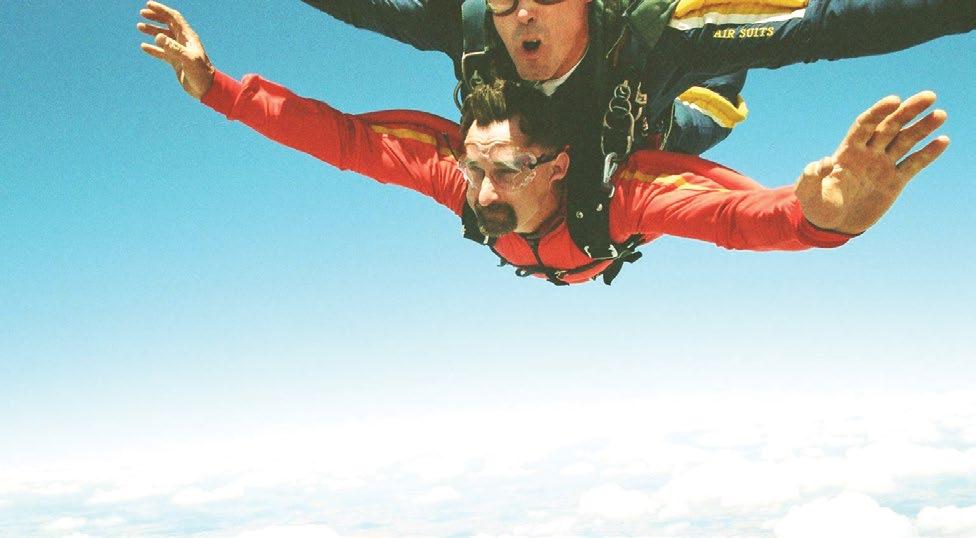

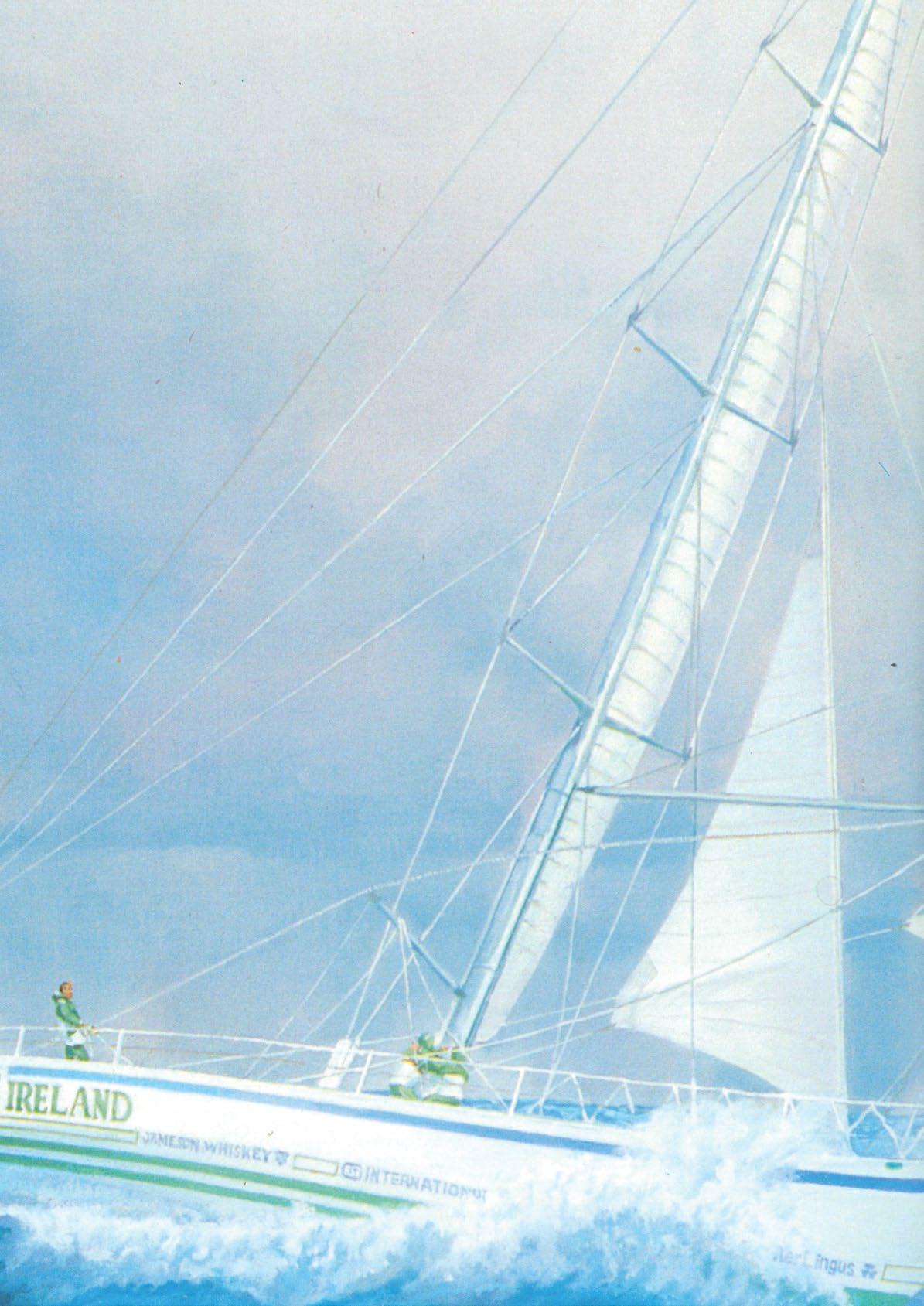
Designed and printed by Pressroom Philanthropy
Level 19, 41 Exhibition St, Melbourne, VIC 3000. pressroomphilanthropy.com.au